
INDUSTRY NEWS ENERGY CIRCULAR ECONOMY THE JOURNAL OF ALUMINIUM PRODUCTION AND PROCESSING www.aluminiumtoday.com January/February—Vol.36 No.1 ALUMINIUM INTERNATIONAL TODAY JANUARY/FEBRUARY 2023 VOL.36 NO1 INDUSTRY 4.0







C e r t if ie d l o w c a r b o n NEW PRODUCT INNOVATION A new line of innovative products (6 alloys divided into three levels) with a certified carbon footprint of less than 4 t CO2 /t Al, cradle-to-gate. Aludium Eco 3.0 (less than 3 tons CO2 /t Al) Aludium Eco 2.0 (less than 2 tons CO2 /t Al) Aludium Eco 4.0 (less than 4 tons CO2 /t Al) • Aludium ECO’s carbon footprint is almost half that of the average of European manufacturers. • Aludium ECO emissions follow standard ISO 14067-1:2018. • 7 years of development and €90 million of investment. The green boost your value chain needs. For further information: aludium.com 5754 8011 3004 3105 5251 3005 AVAILABLE SPECIFICATIONS
Volume 36 No. 1 – January/February 2023
Editorial
Editor: Nadine Bloxsome

Tel: +44 (0) 1737 855115 nadinebloxsome@quartzltd.com

Editorial Assistant: Zahra Awan Tel: +44 (0) 1737 855038 zahraawan@quartzltd.com
Production Editor: Annie Baker
Sales
Commercial Sales Director: Nathan Jupp nathanjupp@quartzltd.com Tel: +44 (0)1737 855027

Sales Director: Ken Clark kenclark@quartzltd.com Tel: +44 (0)1737 855117


Advertisement Production Production Executive: Martin Lawrence
Managing Director: Tony Crinion CEO: Steve Diprose

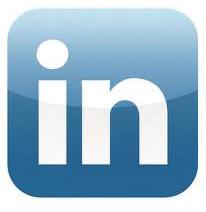
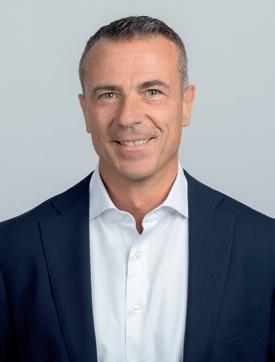
Circulation/subscriptions
Jack Homewood Tel +44 (0) 1737 855028 Fax +44 (0) 1737 855034 email subscriptions@quartzltd.com
Annual subscription: UK £257, all other countries £278. For two year subscription: UK £485, all other countries £501. Airmail prices on request. Single copies £47
COVER
ALUMINIUM INTERNATIONAL TODAY is published six times a year by Quartz Business Media Ltd, Quartz House, 20 Clarendon Road, Redhill, Surrey, RH1 1QX, UK. Tel: +44 (0) 1737 855000 Fax: +44 (0) 1737 855034







Email: aluminium@quartzltd.com


Aluminium International Today (USO No; 022-344) is published bi-monthly by Quartz Business Ltd and distributed in the US by DSW, 75 Aberdeen Road, Emigsville, PA 17318-0437. Periodicals postage paid at Emigsville, PA. POSTMASTER: send address changes to Aluminium International c/o PO Box 437, Emigsville, PA 17318-0437.
Printed in the UK by: Pensord, Tram Road, Pontlanfraith, Blackwood, Gwent, NP12 2YA, UK
CONTENTS 1 www.aluminiumtoday.com Aluminium International Today January/February 2023 2 LEADER 2 NEWS
Cover picture courtesy of GRANCO CLARK
ISSN1475-455X
© Quartz Business Media Ltd 2023
SEARCH FOR ALUMINIUM INTERNATIONAL TODAY 7 48 14 38 37 INDUSTRY NEWS ENERGY CIRCULAR ECONOMY THE JOURNAL OF ALUMINIUM PRODUCTION AND PROCESSING www.aluminiumtoday.com January/February—Vol.36 No.1 ALUMINIUM INTERNATIONAL TODAY JANUARY/FEBRUARY 2023 VOL.36 NO1 INDUSTRY 4.0 41 ENERGY 7 The energy crisis PRIMARY PRODUCTION 17 EGA: From small regional smelter to global giant TRANSPORT & HANDLING 37 Qatalum contract on tapping vehicles awarded to HMR USA FOCUS 41 Focus on US Aluminium in 2023 and beyond EVENT REVIEW 48 AFSA 2022 COMPANY PROFILE: MQP 44 Grain refiner specialist advances sustainable manufacturing STOCKHOLDING 46 What’s next for our industry? PACKAGING 38 Metal packaging takes hold THE ALUMINA CHRONICLES 21 Aluminium Industry in Brazil CIRCULAR ECONOMY 12 Aluminium’s infinite recyclability is the key to a circular economy 14 McKinsey’s sustainable materials hub INDUSTRY 4.0 29 PSI Metals and Seresco partnership 31 The Properzi Reality
Supporters of Aluminium International Today
MEETING THE DEMAND
January always feels as though it gets off to a slow start and then all of a sudden you’re hurtling towards Spring and the world feels like it bursts back to life.
This year already feels like the industry is raring to go, despite uncertainties and hurdles that we will all be facing together.
The news pages in this issue are already starting to fill up with project, investment and Joint Venture announcements, which all point to developments and innovation across the sector.
Each of these will have a goal in mind, which inevitably revolves around meeting the projected demand for aluminium growth. This will be a key theme at the upcoming Future Aluminium Forum, which will finally take place in Québec, after it was originally planned to be held there in 2020.
And it’s not just about meeting this demand, but it is about meeting it with low carbon aluminium products and processes that help to grow and deliver a sustainable supply chain.
The Future Aluminium Forum in particular, will focus on the technologies that are being introduced to not only help streamline processes and put us on a pathway to achieving higher volumes of aluminium production, but also ensuring this aluminium is sustainably produced for current and emerging applications and then of course recycled back into the system.
Find out more about how you can hear from experts in the field and meet with producers at a dedicated forum to discuss the future of aluminium production by visiting: www.futurealuminiumforum. com
nadinebloxsome@quartzltd.com
Hydro invests in green transition
The investments at the Norwegian primary aluminium plants will help Hydro take a leading role in climate efficient aluminium solutions through continued industrial development and initiatives driving the green transition. The primary aluminium plants will have an extended lifespan and the products are turned towards low-carbon aluminum for a growing market.
“We are upgrading the plants, investing in the development of the plants, and implementing new technology such as recycling, carbon capture and green hydrogen with the goal of becoming the world’s first supplier of zero-car-
bon aluminium. We recently entered into an agreement with Mercedes Benz for a technology collaboration, and to supply our aluminium products to support their investment in making lighter, more climate friendly electric cars,” says Ola Sæter, Head of Primary Production at Hydro.

In addition to investment projects, Hydro is working on developing the skills of the work force. During the period of a weaker market for certain aluminium products, Hydro Husnes and Hydro Karmøy are doing a comprehensive skills upgrade. This involves a management develop-

ment program, industrial vocational school, training in the prevention of CO2 emissions, training on various types of vehicles and training in new work tasks.
Record-breaking production
Aluminium Bahrain (Alba) has set a new historic production record of 1,600,111 metric tonnes (MT) in 2022 - an increase of 38,889 MT versus 1,561,222 MT in 2021 (+2.5% Year-on-Year), as announced by the Company on 03 January 2023.

Commenting on this milestone, Alba’s Chief Executive Officer, Ali Al Baqali stated:
“This all-time production record translates our motto ‘opportunities don’t happen, we create them by doing the best we can with what we have’. We also look forward to set new highs in the future driven by our in-house production creep.
I take the opportunity to express
my gratitude to the Management team, our employees and contractors’ personnel for making our
Future Aluminium Forum returns
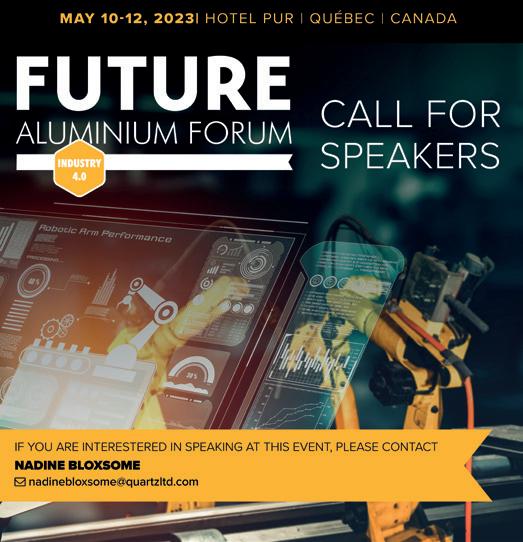
With global aluminium demand projected to increase by almost 40 per cent by 2030, the aluminium sector will need to produce an additional 33.3 Mt to meet demand growth in all industrial sectors.
This will only be possible through the inception of streamlined technologies, digital manufacturing and sustainable solutions across the supply chain.
Originally launched in 2018, the Future Aluminium Forum has focused on the challenges of implementing digitalisation and technologies associated with Industry 4.0 such as Digital Twins, the Industrial Internet of Things,
Artificial Intelligence and Machine Learning.
On May 10-12 2023, the Forum will return in a live format to
Québec City, a region where the aluminium industry has existed for more than a century and is now seeing rapid change and collaboration between manufacturers, processors, suppliers and OEMs.
With a dynamic industrial cluster and several research centres occupying a special place at the heart of this aluminium sector, Québec City is perfectly positioned to play host to the next Forum and welcome discussions and presentations about what the future of aluminium production looks like.
COMMENT 2
January/february 2023 Aluminium International Today
TOP STORIES
2022 objectives a reality by challenging themselves to do more safely and responsibly.”
Constellium to supply Daher
Constellium have announced that it has entered into a multi-year contract with Daher to supply a wide range of flat-rolled aluminium products, particularly for the TBM and Kodiak aircraft. With this new agreement, Constellium expands its customer portfolio for business and regional jets and becomes the strategic aluminium supplier for Daher.

Under this new contract, Constellium and Daher will cooperate on joint supply chain initiatives and product development. Con-
stellium will support TBM and Kodiak aircraft development as their production rate is increasing and will collaborate with Daher on the design of new solutions to further lightweight aircraft along with respective sustainability commitments.
“We are very proud and enthusiastic to become the strategic aluminium supplier of Daher; this contract is the basis of future developments between our teams,” explains Lionel Thomas, Global Aerospace Sales Director of Con-
stellium’s Aerospace and Transportation business unit.
“Choosing Constellium as our strategic aluminium supplier for the needs of our own aircraft and aerostructures programs is a major step for us, and will build foundations for further partnership to develop sustainable and optimised aircraft and solutions,” said Paul-Marie Dubreuil, VP Procurement, Daher.
Daher is supplied by Constellium’s facility in Issoire (France).
Aluminium beverage can recycling rate remains high
The latest report by Metal Packaging Europe and European Aluminium shows that the overall recycling rate for aluminium beverage cans in the European Union, United Kingdom, Switzerland, Norway and Iceland remained high in 2020 at 73% (72.8%). With a 3% points drop compared to 2019 and a growth of 9% cans consumed, the total amount of aluminium recycled from cans reached a record level of 510,000 tonnes, an increase of more than 20,000 tonnes since the previous year. This represents a total Greenhouse Gas (GHG) emissions saving of 4,2 million tonnes of CO2eq (equivalent to the amount of GHG emissions produced by a European town of nearly half a million inhabitants like Toulouse or Gdansk1.)

Can manufacturers (members of Metal Packaging Europe) and their aluminium suppliers (members of European Aluminium) welcomed the new result and stressed that despite the introduction of the new EU recycling reporting rules and the spectacular growth in cans consumed, the total tonnage of recycled aluminium cans has increased. Most EU Member States now report at the point of entrance of a recycling facility, instead of the collection phase. This has resulted in a recycling drop for
most packaging materials.
“We are fully supportive of the new EU recycling reporting rules as these measure ‘real’ recycling and we are pleased to notice that this has resulted in only a very minor and likely only temporary drop in the can recycling rate. The aluminium beverage can already meets the highest recyclability performance grade of 95% as proposed in the new draft for a Packaging & Packaging Waste Regulation’’ said Léonie Knox-Peebles, CEO of Metal Packaging Europe. As aluminium beverage cans are fully circular and can be recycled endlessly without losing the aluminium’s inherent properties, we are confident that even in a growing market we will be able to meet our 100% beverage can recycling ambition by 2030”.
“With more and more countries turning to Deposit Return Systems
(DRS) we will be able to recycle more cans via a can-to-can remelting solution, generating maximum environmental benefits and we are calling upon those countries with classic EPR systems to invest more into the collection and sorting of the whole aluminium packaging fraction in order to fully close the material loop’’ Maarten Labberton, Director Packaging Group at European Aluminium, commented. “Although we are surprised by the unfounded high reuse targets in the new EU proposal, we welcome the obligation to collect 90% or more of metal and plastic beverage containers for recycling, preferably via DRS. A Deposit Return System should be balanced, which means that it should be run by an independent operator, have variable deposit fees and no cross subsidies between the materials concerned.’’
IAI Welcomes MYTILINEOS as New Member
MYTILINEOS is one of the key players in the Metallurgy sector and one of Greece’s healthiest growing industrial companies, having operated for almost 60 years. It is the largest vertically integrated bauxite, alumina and aluminium producer in the European Union.
ASI certifies Cevher Jant A.S. against Performance Standard
Aluminium Stewardship Initiative (ASI) has announced that Cevher Jant A.Ş. (CEVHER) has been certified against the Performance Standard (V2) 2017 at its automobile wheel production facilities in Izmir, Turkey. CEVHER is a co-design partner with automotive OEMs, and brings the in-house capacity to design, develop, manufacture, and validate the wheels produced.
New funding partner for UK aerosol recycling initiative
Trivium Packaging has committed to funding the UK Aerosol Recycling Initiative launched by Alupro, the aluminium packaging recycling organisation.
Designed to increase awareness and uptake of aerosol recycling across the UK, the initiative follows a three-phase approach educating consumers around best practice, establishing a baseline recycling rate and developing a roadmap for achieving higher rates for aerosol recycling.
ASI and IPAF Workshop
Aluminium Stewardship Initiative (ASI) and Indigenous Peoples Advisory Forum (IPAF) held a one day workshop at the 10th International Conference and Exhibition on Bauxite, Alumina and Aluminium (IBAAS – JNARDDC 2022) in Raipur. The theme of the IBAAS 2022 conference was ‘Sustainability Challenges of Bauxite, Alumina & Aluminium Industry’.
The workshop provided an opportunity to explain ASI, the work of IPAF, the revised ASI Standards, certification process and the issues that aluminium companies in India face.
3 NEWS IN BRIEF January/February 2023 NEWS Aluminium International Today
5
www.aluminiumtoday.com
Alba: Solar investment
Aluminium Bahrain B.S.C. (Alba) has announced that it has awarded its Solar Farm Project towards Advanced United Systems (AUS) to install Solar Photovoltaic (PV) Panels over 37,000 m2 with a capacity of more than 6 Megawatts (MW).
The Solar Farm Project will consist of around 11,300 solar panels to be fixed on the rooftop of Alba car parks and some of its buildings to include the Spent Pot Lining Treatment (SPL) Plant. The Solar Farm Project will generate in the range of 10,539 MWHr per year and ap-
proximately 7,591,760 kilograms of carbon emissions would be reduced per year -- corresponding to a total reduction of 189,794,000 kilograms of carbon emissions over 25-year span.
Commenting on the importance of the Solar Panel Farm to Alba, Alba’s Chairman of the Board Shaikh Daij bin Salman bin Daij Al Khalifa stated:
“Sustainability is entrenched in our Vision, Mission, and Values; this Project is fully aligned with our Environmental, Social and Governance
(ESG) ambitions and our pledge to realise HRH the Crown Prince and Prime Minister’s objectives of Net Zero Emissions by 2060 as made during the 26th Climate Change Conference of the Parties (COP26). I trust that upon the completion of installing the solar panels, will see more environmentally responsible projects across the Kingdom to scale up the local clean energy generation and transition to a net-zero economy.”
EGA purchases Clean Air Certificates
Emirates Global Aluminium has purchased Clean Energy Certificates for 1.1 million megawatt hours of electricity supplied by Emirates Water and Electricity Company (EWEC), supporting EGA’s production of CelestiAL solar aluminium.

The certificates track the use of solar power from Noor Abu Dhabi, one of the world’s largest single-site solar power plants. Noor Abu Dhabi is located at Sweihan, and has 3.2 million solar panels generating approximately one gigawatt of electricity.
The transaction is the largest ac-
quisition to date of Clean Energy Certificates that track the use of solar power in Abu Dhabi, and will certify EGA’s production of around 80,000 tonnes of CelestiAL. The volume of CelestiAL EGA produces each year depends on solar power imports from the electricity grid.
The generation of the electricity required for aluminium production accounts for approximately 60 per cent of the global aluminium industry’s greenhouse gas emissions. The use of solar power by EGA significantly reduces these emissions in line with the UAE’s Net Zero by
2050 Strategic Initiative.
Abdulnasser Bin Kalban, Chief Executive Officer of Emirates Global Aluminium, said: “This agreement provides EGA with a new source of certified solar power for the production of our CelestiAL solar aluminium. I thank EWEC for their partnership, and for their leadership in the development of solar power in Abu Dhabi. The launch of CelestiAL solar aluminium last year was a landmark for EGA and our industry. CelestiAL and other low carbon metal is key to our sustainable future – both for our company and our world.”
£10M for CirConAl Project
Constellium has announced that it is leading a new consortium of automakers and suppliers to develop lower carbon, lower cost aluminium extrusion alloys.
Sponsored by a grant from the UK’s Advanced Propulsion Centre (APC), the £10 million CirConAl (Circular and Constant Aluminium) project aims to maximise the use of post-consumer scrap in a new generation of high-strength alloys that emit less than two tons of CO2 per ton of aluminium produced. CirConAl is part of joint government and industry support for projects to build an end-to-end supply chain for zero-emissions vehicles in the UK.
By designing, developing, prototyping, and testing aluminium automotive components at scale, the project is expected to demon-
strate that high-strength alloys with high recycled content can meet or exceed OEM requirements, such as strength, crushability, durability, and other performance criteria. Together, the partners would also develop scrap sorting technologies to ensure that valuable metal is recy-
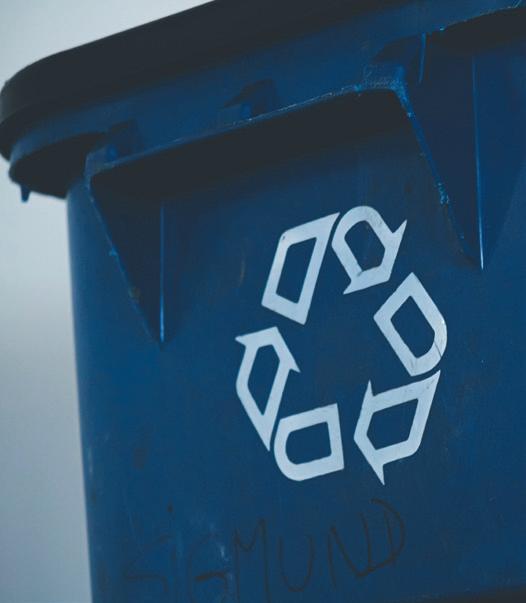
cled into new automotive solutions rather than downcycled, preserving its value and contributing to a circular economy.
“Low carbon solutions require collaboration across the supply chain and Constellium is proud to lead the CirConAl project in partnership with the APC, automakers, and suppliers as the industry works toward carbon neutrality,” said Philippe Hoffmann, President of Constellium’s Automotive Structures & Industry Business Unit. “Taking advantage of Constellium’s high-strength HSA6® aluminium extrusion alloys, as well as new scrap sorting and blending technologies, we expect this next generation of alloys to provide automakers with ultra-low embodied CO2 material to drastically reduce the carbon footprint of their products.”
2023 DIARY
March 19th - 23rd TMS
The TMS Annual Meeting & Exhibition brings together more than 4,000 engineers, scientists, business leaders, and other professionals in the minerals, metals, and materials fields for a comprehensive, cross-disciplinary exchange of technical knowledge. Held in California, USA www.tms.org/ AnnualMeeting/TMS2023
30th March - 1st April METEF
Expo of customised technology for the aluminium, foundry castings & innovative metals industry. New opportunities for the downstream sector generated by the synergies between Metef and MECSPE. Held in Bologna, Italy www.metef.com/en/
MAY 10th - 12th Future Aluminium Forum
The Forum will return in a live format to Québec City, a region where the aluminium industry has existed for more than a century and is now seeing rapid change and collaboration between manufacturers, processors, suppliers and OEMs. Held in Québec City, Canada www. futurealuminiumforum. com/
16h - 18th
CRU: World Aluminium Conference 2023
The Conference will allow attendees to make valuable connections with industry peers and build their professional network in a business social environment. www.events.crugroup. com/aluminium
For a full listing visit www.aluminiumtoday.com/ events
Aluminium International Today
4
January/February 2023 NEWS


















































ST. LOUIS, MISSOURI, USA 800 325 7075 | www.gillespiepowers.com | 314 423 9460 ✓SINGLE CHAMBER / MULTI CHAMBER FURNACES ✓SCRAP DECOATING SYSTEMS ✓TILTING ROTARY MELTING FURNACES ✓SCRAP CHARGING MACHINES ✓LAUNDER SYSTEMS ✓CASTING / HOLDING FURNACES ✓HOMOGENIZING OVENS ✓COOLERS ✓SOW PRE-HEATERS ✓REPAIR & ALTERATIONS
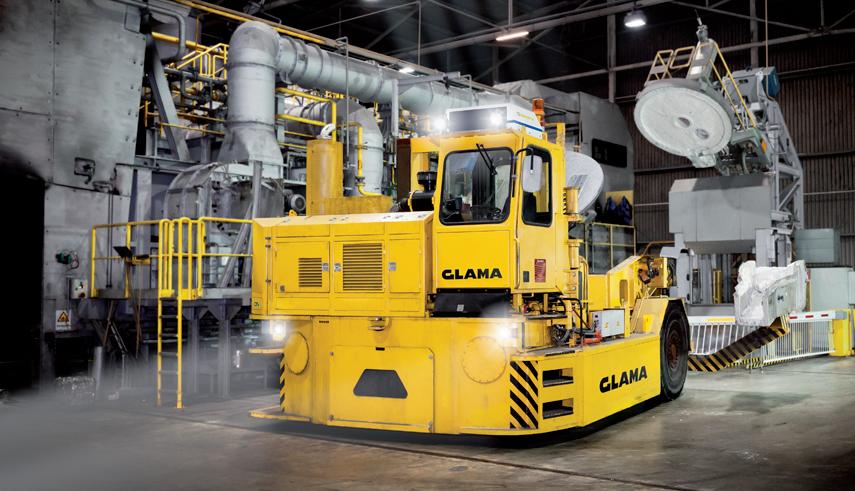
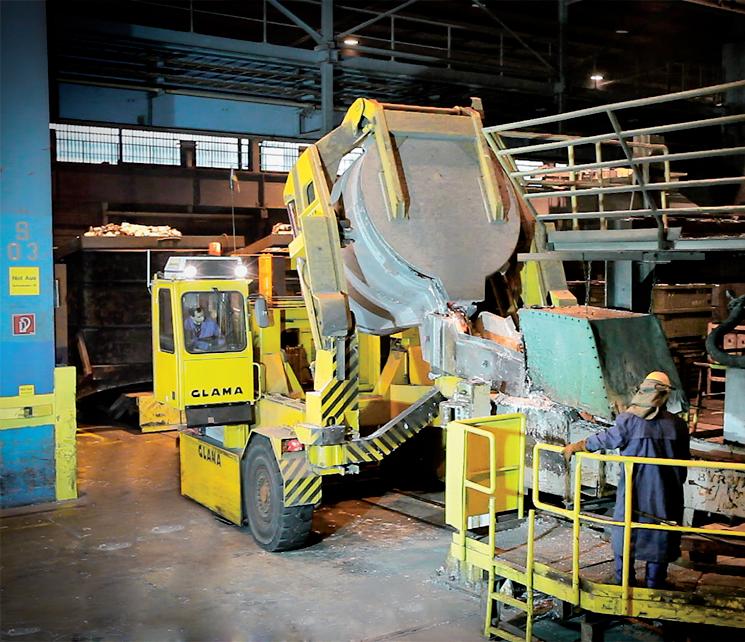

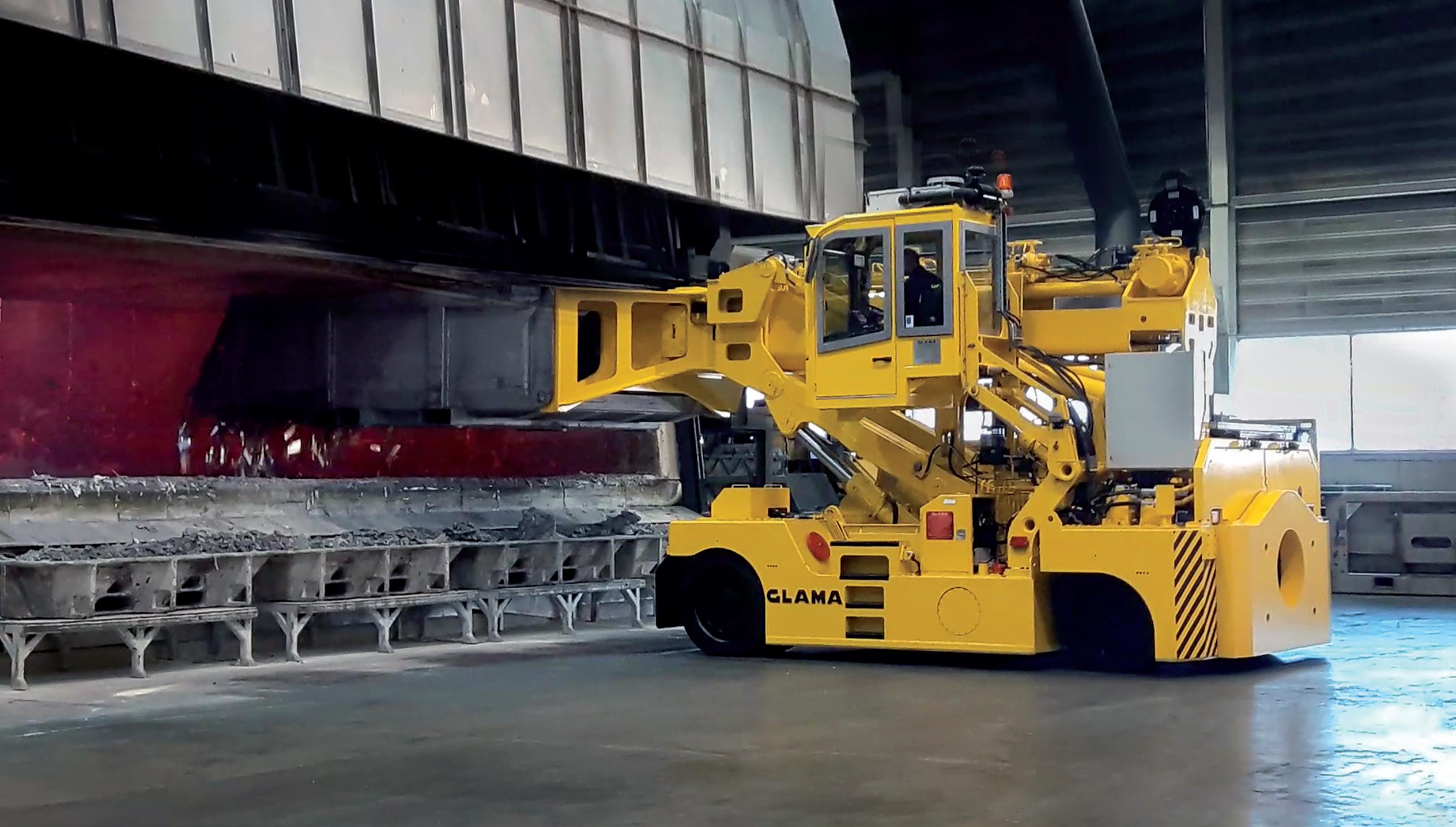
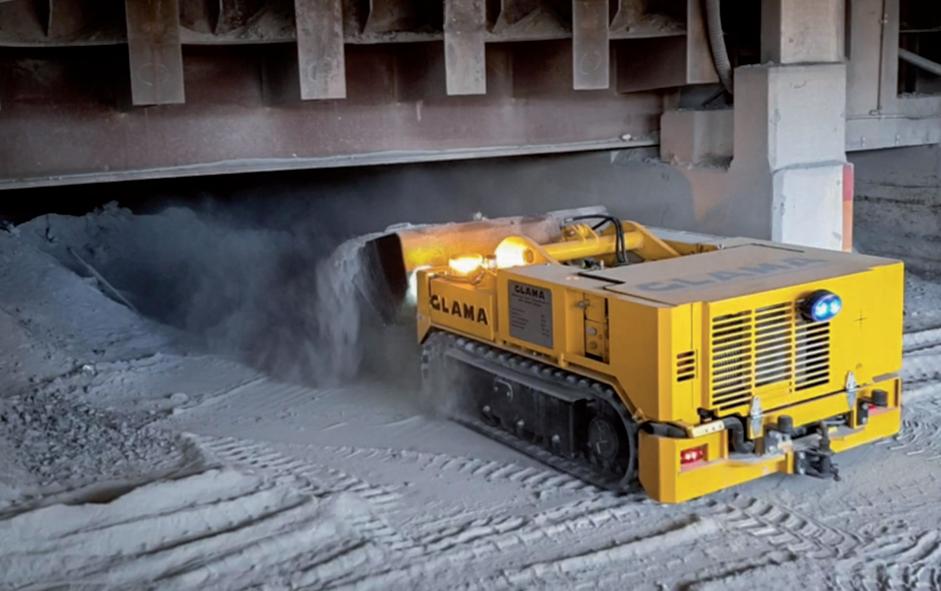


GLAMAMaschinenbauGmbH Headquarters: Hornstraße19 D-45964Gladbeck/Germany Fon:+49(0)204397380 Fax:+49(0)2043973850 email:info@glama.de glama.de Costeffectiveheavyduty mobileequipment foraluminiumindustries... always thedurable solution GLAMAUSAInc. 60HelwigSt.,Berea,Ohio44017 Fon:+18774526266 Email:sales@glama-us.com
The energy crisis
Challenges and chances for the European aluminium industry
Interview with Emilio Braghi – Executive Vice President, Novelis Inc. & President, Novelis Europe – on the current energy situation for the European aluminium industry and the company´s approach to navigating through the storm.
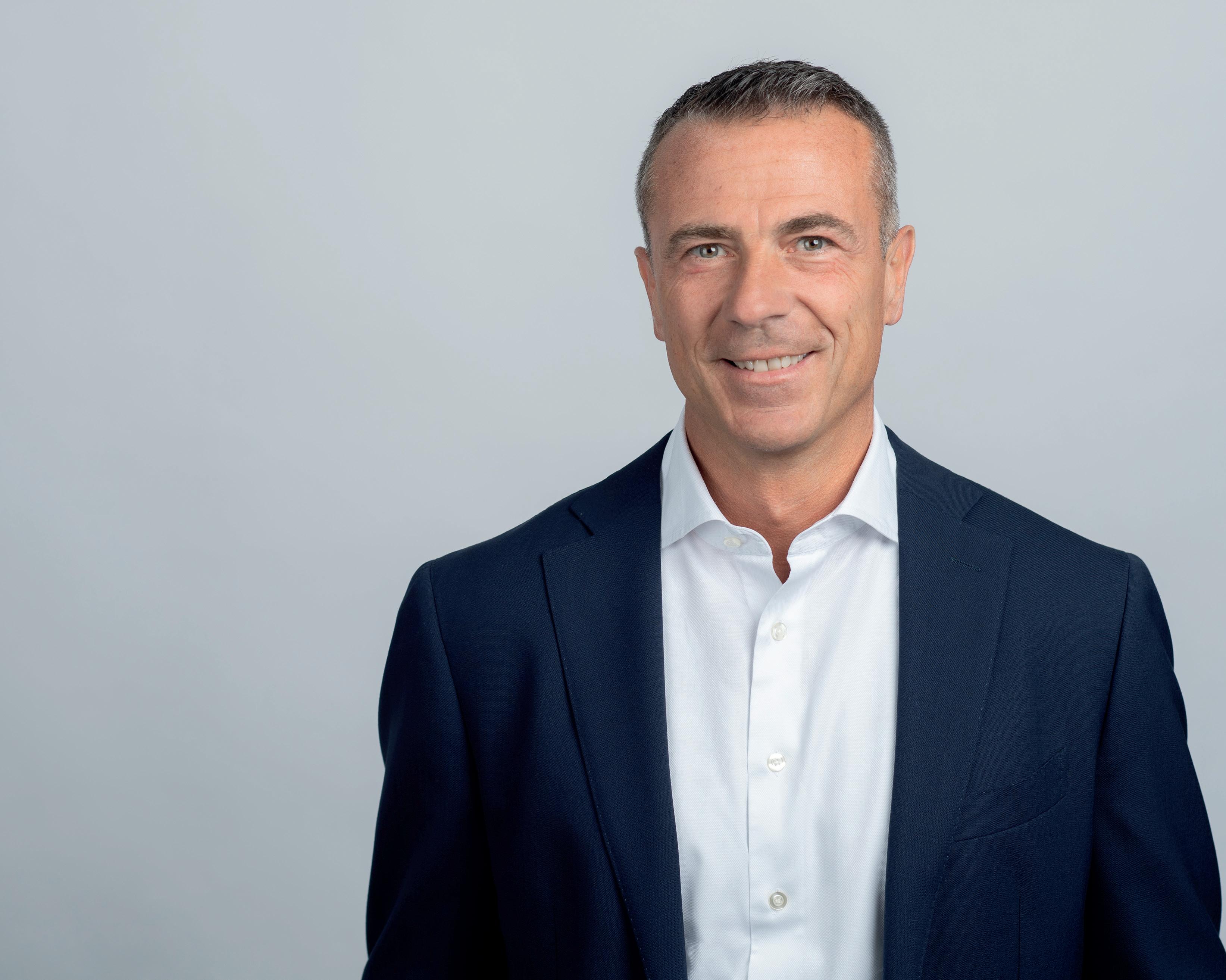
Mr Braghi, how do you assess the current energy crisis? How is Novelis affected?
Novelis, as one of the world’s largest aluminium recyclers, is less dependent on electricity than primary aluminium producers, who consume a lot of power in the electrolysis process. By leveraging recycling, we contribute to reduce our energy needs. Recycling saves 95% of energy and up to around the same amount of carbon emissions compared
to primary aluminium production. However, to recycle and further process aluminium, we do need a stable supply of natural gas and electricity at affordable prices and therefore we are also impacted by the energy price escalation.
The high levels of energy prices coming with this extreme volatility is clearly something which is not sustainable for the European industry in the long-term, so we need to find a solution. I believe
that the energy market will rebalance, and it’ll probably take 18 to 24 months to see prices stabilising at a more normal level. But it’s very important for the aluminium industry in Europe and in general for the overall European manufacturing industry to get back into a situation where energy prices are more affordable and enable the industry to remain competitive with other regions, also to prevent relocations.
Is this a real threat to the industry´s future in Europe – and to the company you are heading?
There definitely is a threat for the industries in Europe as the cost increases for operations are substantial. We already see the impacts in the market – for the aluminium industry and other energy intensive sectors. The true extent of the damage will depend on how long energy prices will remain at these exceptionally high levels and volatility
and if government programs can help secure the financial sustainability and international competitiveness of European companies.
Don´t forget the market dynamics following this energy crisis, which came on top of the production backlogs and supply chain challenges following Covid. Macroeconomic and geopolitical risks remain elevated, and we will need to navigate a challenging couple of quarters ahead as inflationary impacts intensify.
Although the macro-economic environment is uncertain, we believe long-term demand for sustainable, lightweight and infinitely recyclable aluminium products will persist. As such, we remain committed to our transformational capital investment strategy, investing in new rolling and recycling capacity and capabilities to grow with our customers, and we will continue to progress these activities in a disciplined, paced manner.
ENERGY 7 Aluminium International Today January/February 2023
Emilio Braghi, Executive Vice President, Novelis Inc. and President, Novelis Europe
You mentioned government programs. Which EU programs are you referring to and to what extent is the aluminium sector benefitting from these?
Within Europe, there are differences from country to country in terms of the support received by the industry. French producers for example benefit from an industry price for electricity, which was in place already before the energy crisis, and measures to reduce the price of gas and electricity. Spain and Portugal have also implemented very early support programs with approval of the European
The European Union has been working on a price capping mechanism applying to all Member states. Do you support this proposed Market Correction Mechanism? I highly support the launch of such initiatives – even more than that, I think they´re indispensable. The idea of limiting excessive European gas prices when they are unrelated to global price spikes is an effective way to secure international competitiveness. The price level of EUR 275/MWh initially proposed was a signal in the wrong direction. With EUR 180/ MWh we have now come to a level which is avoiding extreme peaks –however, it is still a multiple of the pre-crisis prices and does not ensure the competitiveness of the European industry in my opinion.
So how should a Governmental protection shield look like? Programs with the power to effectively protect the industry will need to restore costs to a level that enables the industry to run sustainable businesses in Europe – taking into account the competition in other regions of the world and still making our region attractive for exporters of natural gas. They should not impact hedging contracts or be linked to the requirement to demonstrate a negative EBITDA. And of course, they should be in place for a long enough duration to enable plannability and predictability.
Commission.
To avoid distortions of the competition within Europe, a Europe-wide solution would be preferrable, including a cap on the price of gas which enables the industry to run sustainable businesses in Europe, decoupling the electricity price from the price of gas, and the acceleration of investments in renewable energy.
Given that there is currently no EUwide cap on the price of gas at a level the industry needs, we welcome the measures taken at national level such as the protective shield that Germany is
putting in place for tackling both the gas price and the electricity price. However, it is important to note that we are talking about a gas price cap at 7ct/kWh, and an electricity price cap at 13ct/kWh. Both price caps still are at a multiple of the pre-crisis levels and only apply to 70% of the consumption.
In addition, various restrictions, conditions and upper limits apply which may dilute the effect of the price caps. The situation will thus remain extremely challenging for the industry, also in Germany.
So, are your sustainability projects slipping more and more into the focus of cost saving instead of a strong purpose?

No, definitely not. Novelis is driven by its strong purpose of shaping a sustainable world together. We made environmental and social sustainability the core of our business strategy and daily actions already 11 years ago. It might seem that the news on the current geopolitical situation and its impact on the markets is taking precedence over the political
Which measures are you taking within your company to mitigate the risks the energy crisis brings?
We are currently reviewing all appropriate measures to minimise the impact of the energy crisis on our business and discussing with our customers and suppliers how to manage the situation going forward.
We are in general saving electricity and gas in our processes wherever possible, aiming to accelerate the achievement of our set goal: 10% reduction of energy intensity by 2026. As we know that every continuous improvement project is based on accurate measuring before developing and implementing sustainable improvement action, we started to focus on detailed tracking of energy consumption per machine center.
In addition, we have filed two projects in Europe to build onsite solar parks close to our plants – reducing the amount of energy we are taking out of the national grid and with that of course further increasing our independency from the energy market.
debate on the need for carbon neutrality – but the need for decarbonizing our operations and our daily life is in no way diminished.
Our Novelis sustainability strategy is clear, we hold on to our ambitious carbon footprint reduction targets. We aim at a reduction of 30% by 2026 and being carbon neutral by 2050.
Moreover, we’re pushing hard on circularity. It’s not only about carbon footprint reduction – our offering and concept on aluminium is really to bring
the material back into the production loop at the end of the products life, again and again.
The difference that the current situation of energy crisis brings to our sustainability journey – and I tend to be optimistic on that side – is a chance to accelerate the transition to renewable energy in Europe, combined with an increased focus on the need to reduce energy consumption –for which our core business of recycling aluminium contributes dramatically.
Aluminium International Today January/February 2023 ENERGY 8
Novelis recycles more than 80 billion used beverage cans annually and runs the largest and technologically most advanced aluminium recycling plant in the world where up to 400,000 tonnes of aluminium scrap can be processed every year.


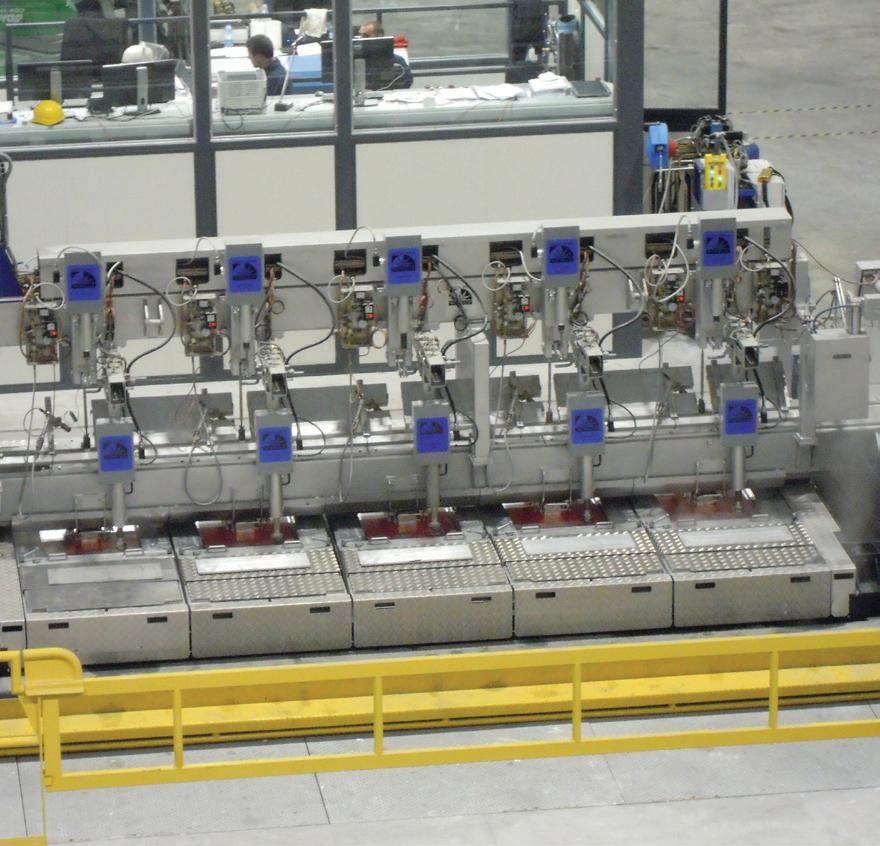


Novelis PAE Centr’Alp BP 24 38341 Voreppe Cedex, France Tel +33 4 76 57 87 00 Fax +33 4 76 56 65 39 pae.marketing@novelis.adityabirla.com www.novelispae.com ALPUR® G3-2R degassing unit Meet us at GIFA 2023 Germany
You already talked about your focus on recycling and projects to increase onsite renewable energy generation – any other energy saving project you can tell us about?
We pursue a holistic approach to increase energy efficiency in our plants –in general and even more in the current situation. Heat recovery is one of the topics we are looking into rolling out more broadly, which means finding

And what does the future hold for Novelis?

Aluminium is the ideal material for circularity. We are a committed business partner to our customers, who are increasingly demanding sustainable aluminium products. To meet this growing demand, Novelis has begun

ways to reuse the waste heat coming from our furnaces. In general, half of our natural gas consumption goes into the aluminium melting process. So, this is definitely an aspect where we can and must make a difference.
We have established an energy ecosystem in our Sierre plant in Switzerland to share waste energy with the surrounding community. It´s running already but we will continue to increase
a multi-year, transformational organic growth investment period to further strengthen our position as the global leader in low-carbon and innovative aluminium solutions. The next 18 to 24 months will be challenging, and we may need to pace some of the capital spending and prioritize growth investments that
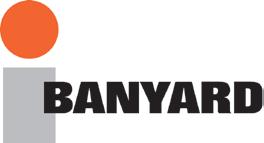
the amount of shared energy in the next weeks and months. Other energy recovery systems are established in our Koblenz plant and at our Joint Venture Alunorf in Germany. Moreover, we are planning to engage in pilot projects to test alternative energy sources, such as plasma and hydrogen – just to name some initiatives besides the mentioned onsite renewable energy generation.
are aimed at meeting strong demand and that help us, and our customers, to achieve ambitious sustainability goals. But our long-term view on aluminium is not changing – demand and industry will continue to grow.
Novelis is a global leader in the production of innovative aluminium products and solutions and the world’s largest recycler of aluminium. With the ambition to be the leading provider of low-carbon, sustainable aluminium solutions and to achieve a fully circular economy, the company is partnering with suppliers, as well as our customers in the aerospace, automotive, beverage can and specialties industries throughout North America, Europe, Asia and South America.
Aluminium International Today January/February 2023 ENERGY 10
Stub Heaters for Primary Aluminium Production • Supports all Anode Stub Layouts • Guard Plates to Increase Coil Durability • For Drying and Heating Pre-Straightening • Efficient Heating Reducing Downtime • Tailored to Stub Diameter and Material • Further Customisability for the End User Call +44 (0)1256 335 533 Email: info@inductothermhw.co.uk www.inductothermhw.com AIT 2020 AD 5.indd 1 18/12/2019 10:01:26
Electrolysis and Environmental Solutions

Offering a unique combination of know-how, state of the art and proven technologies we stand ready to help our clients with their metal production and environmental concerns. With a culture of innovation we also support them in their emission control.



TOGETHER TOWARDS PERFORMANCE
Carbon Area



Our carbon area plant solutions and technologies are designed for excellent reliability and availability. We can provide a complete range of technologies and process solutions in both greenfield and brownfield project environment.
Port Area
From incoming material delivery, to conveying, storage and transport to the smelter, we have been supporting the Aluminium Industry with premium solutions for decades.

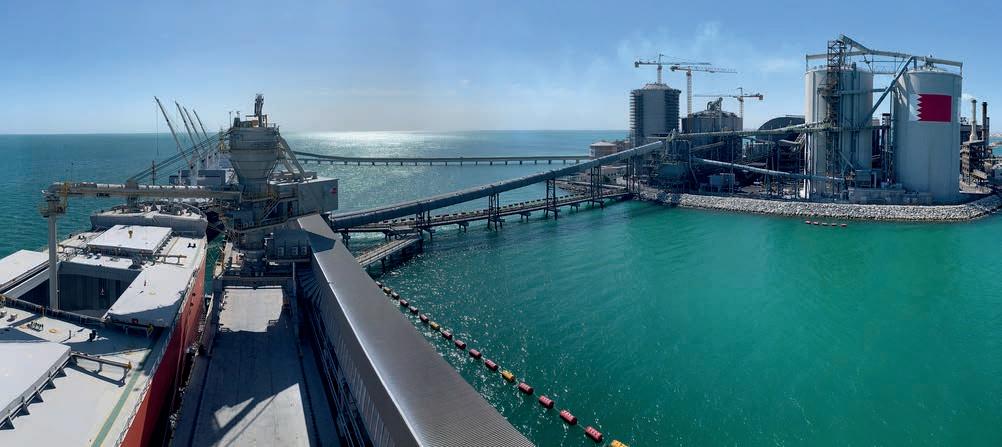


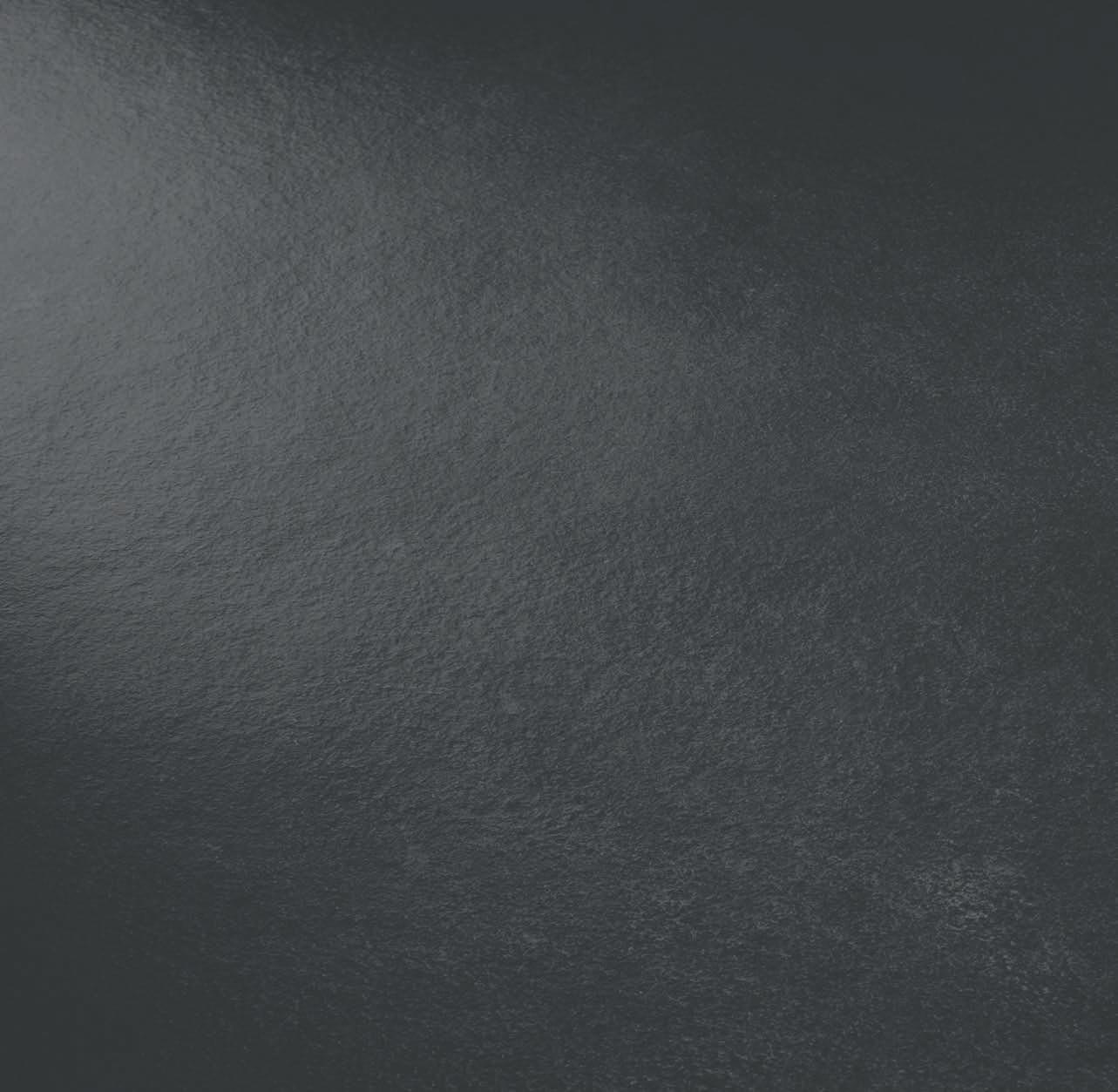


Casthouse
REEL international is a leader in the design, fabrication, and supply of casthouse equipment for today’s highly competitive and quality-driven Aluminium Industry.







www.reelinternational.com
Aluminium’s infinite recyclability is the key to a circular economy

Cutting carbon emissions has risen from being an activist issue to an issue on the top of the agenda for politicians, regulators, investors, consumers and society as a whole. Here is how recycling can be an important contributor to achieving a low emission world. By Ingrid Guddal*, and Jean-Marc Moulin**
The 2021 United Nations Climate Change Conference (COP26) concluded with a warning and a heightened sense of urgency to mitigate the consequences of climate change. The stresses on our planet have reached peak levels, with severe droughts, fiercer storms, heatwaves, and rising sea levels impacting all life but disproportionately affecting vulnerable communities. Responding to these challenges, we are witnessing a change in consumers’ preferences as they seek products with fewer adverse environmental impacts. This change is spurring the demand and production of low carbon materials.
Since aluminium came on the scene in 1825, about a billion tons have found its way into a multitude of goods in our lives: the beverage can in your hand, the window frame in your house, parts of that new car you’re driving – the list goes on. An astonishing fact is about 75% of it is still in use. Now, the challenge at hand is ensuring that aluminium is produced with low emissions and is being recycled at the end of its use. Like all industries,
the aluminium industry must work to implement radical solutions for carbon emissions to alleviate threatening climate consequences.
There are few metals stronger, more durable, or more useful than aluminium and recycling it only requires 5% of the energy used to produce primary aluminium. Unlike competing materials, aluminium does not lose any of its unique properties in the recycling process. But
not all recycled aluminium is equal. Much of the scrap generated in the production process of aluminium is already recycled today. To accelerate emission cuts, we need to dramatically increase the use of postconsumer scrap, keeping this material out of the landfill and in productive use.
As the leader in U.S. aluminiium sustainability, Hydro has recently made significant capital investments to drive the green transition in North America through

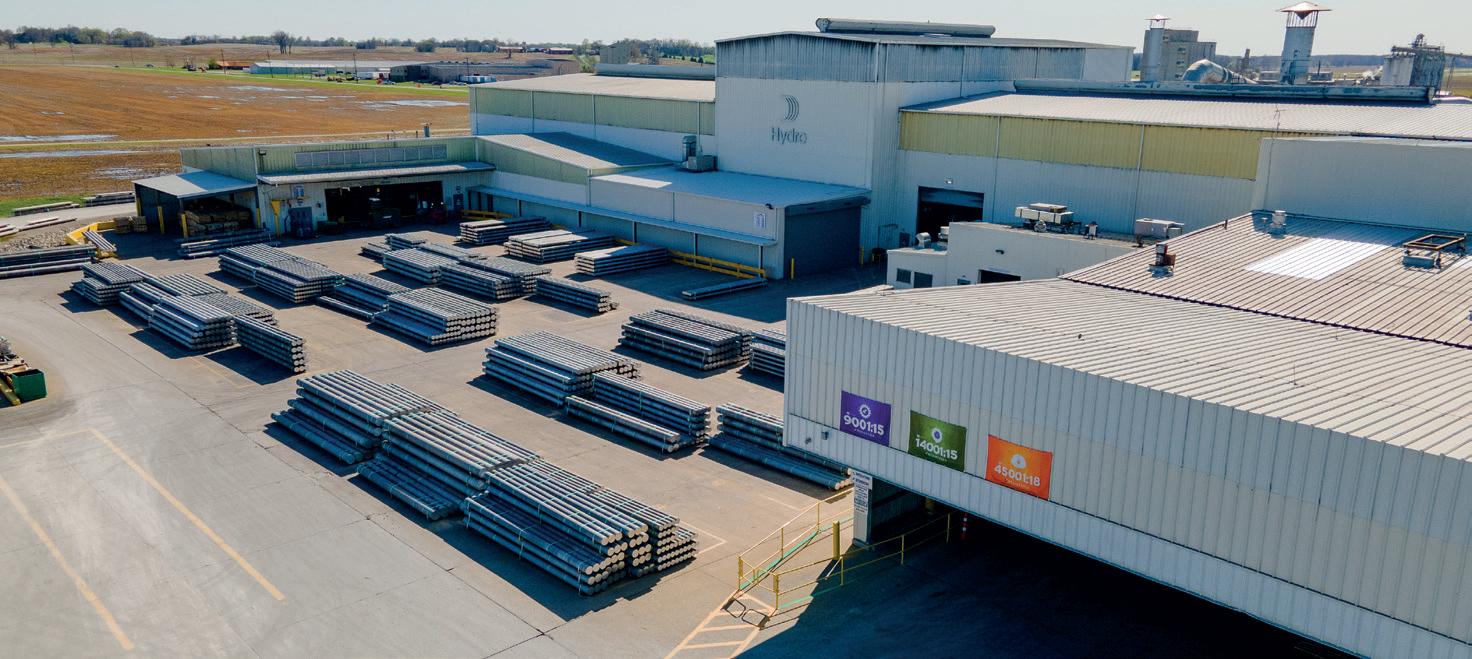
Aluminium International Today January/February 2023 CIRCULAR ECONOMY 12
*Head of Recycling, Hydro Aluminum Metals **Director of Sustainability, Hydro Extruded Solutions
Hydro Cressona aerial view
Ingrid Guddal
increased use of post-consumer scrap and supporting the goals U.S. manufacturers set in the EV, transportation, and building and construction industries. We are building a $150 million state-of-the-art aluminium recycling plant in Cassopolis, Mich., with production commencing in Q4 2023. This facility will include equipment designed to specifically recycle large volumes of post-consumer scrap. In addition, the company has invested $15 million into our Henderson, Ky. facility to deliver certified recycled aluminium products to the automotive industry and further reduce the environmental impact from production. Hydro invested another $50 million into its extrusion plant in Cressona, Pa. to expand the site’s recycling capabilities, which include remelt and extrusion billet casting that produces a range of aluminium products. Another key capital investment that Hydro has made is a $27 million investment in our remelt facility in The Dalles, Ore. to enable Hydro’s use of post-consumer scrap consumption and further reduce the footprint of our extrusion solutions.

With each of these projects, customers will know where their aluminium is coming from. Transparent, accurate measuring and reporting of content is essential in ensuring that recycling aluminium can significantly contribute to a reduction in carbon emissions. Hydro is committed to being an industry leader in transparency with clear and accurate reporting on Scopes 1 through 3 for all of its products throughout the value chain.
Hydro’s ambition is to be the industry front-runner in reducing our environmental footprint by improving our performance in every aspect of the value chain. This includes research and development into new technologies, better ways of working, spreading best practices on low-carbon solutions, as well
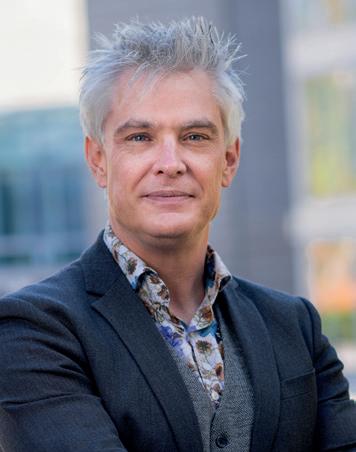
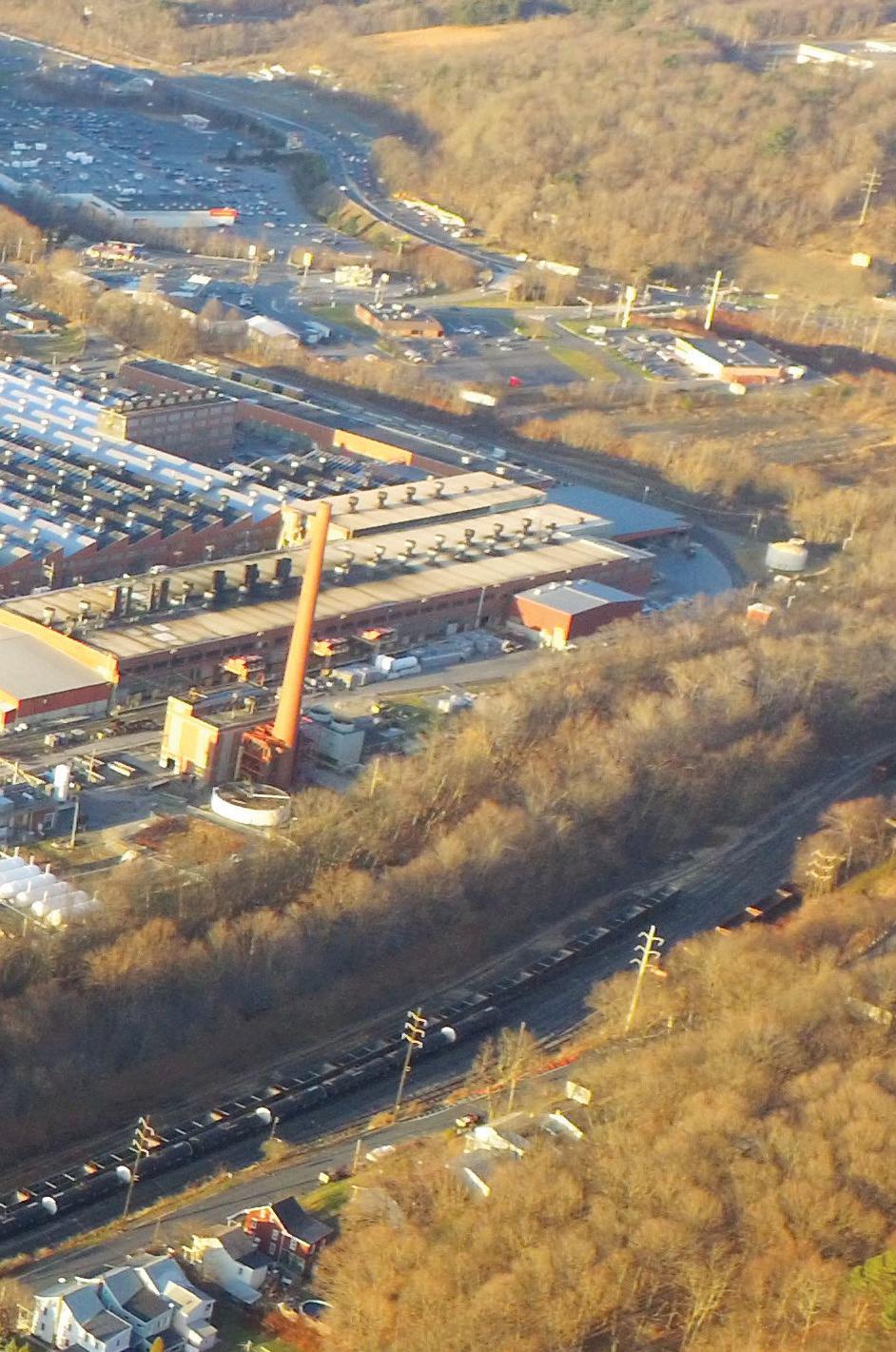
as helping our customers reduce their footprints with product offerings and closed loop recycling solutions.
Measuring the outcomes of our sustainability initiatives against our ambitions and goals – and then making the appropriate adjustments to continually improve our outcomes – is also a critical component, and the main differentiator, in solidifying Hydro as the industry leader in sustainability. There is a vast difference between setting lofty goals and taking the necessary actions to achieve them.
But we cannot do it alone. Hydro has identified pragmatic outcomes, both in the short and long term, that support our mission in accelerating the transition to a more circular economy and help define the material impact of the industry’s sustainability efforts.
The short-term collective goals to drive circularity and lower carbon impacts include:
� Brands driving demand for greener materials based on consumer preferences and scrutiny.
� Growing recycled aluminium consumption with an anticipated annual growth rate of 5.4% from 2020-2030, compared to only 2.2% for primary aluminium.
� OEMs implementing requirements for easy disassembly for automotive components.
� Enacting stronger low-emissions policies and regulations as market forces alone will not ensure the use of lowcarbon materials.
According to the International Aluminium Institute, the global aluminium industry must slash greenhouse gas emissions by 77% by 2050 to meet climate-change goals, while demand for aluminium is due to grow by 80% to around 180 million tons of semi-fabricated products by 2050.
Over the longer term, we see several trends emerging:
� Demand for recycled aluminium overtaking demand for primary aluminium.

� Legislation paving the way for new production and consumption methods and practices.
� Recycling and reusing aluminium will create new ways of working in the supply chain and with partners.
� A design for circularity will be the standard and traceability will be a prerequisite.
Although current global efforts to slow climate change and create a more circular economy are promising, it is clear they will be insufficient without collective efforts. Manufacturers, like Hydro, are making large-scale, efficient investments into low-carbon materials and production processes. Aluminium is uniquely positioned, with its infinite recyclability, to play a key foundational role in a lower carbon future. By working together, and building on the momentum created by the industry, we can ensure we create deciding change and reach our collective climate ambitions.
�
CIRCULAR ECONOMY 13 Aluminium International Today January/February 2023
Jean-Marc Moulin
McKinsey’s Sustainable Materials Hub

To assist the industry on maintaining the sustainable standard we have achieved, McKinsey & Company ‘serve the majority of the world’s largest metals companies across a broad spectrum of topics, bringing a unique blend of industry, capability, and regional expertise’. To find out more, Zahra Awan* spoke with Patricia Bingoto ** and Anna Moore*** about the offerings from the McKinsey’s Sustainable Materials Hub.
The Sustainable Materials Hub is a resource presenting McKinsey’s perspectives on ‘green’ materials supply-demand and pricing outlook.
Looking into the definition of ‘Green’ Materials, Anna Moore listed a summary of requirements that need to be considered, including: “decarbonisation, reduce water usage, increase circularity, biodiversity and social responsibility.”
The Hub aims to encourage the collaboration of the producers and purchasers of materials against the challenge of decarbonisation and provide a roadmap for producers on how they can decarbonise. Ms Moore noted that “materials are about 20% of greenhouse gas emissions; we need to increase material supply in order to make the energy transition happen, therefore, the demand for materials is also expected to increase.” With the anticipation of this domino effect, transparency comes to the forefront of conversation. The Hub enables a level of transparency for companies adding a steppingstone to get
closer to our industry goal. One example of the Hub in use is in the EV industry and Original Equipment Manufacturers (OEM’s) and how they can source low carbon materials, as well as partner with the rest of the value chain to continue the chain of decarbonisation, following our inevitable falling domino trajectory with our own controlled version.
“If done correctly, the sustainability and the energy and materials transition can be one of the biggest economic growth drivers in our lifetimes. We estimate 9 to $12 trillion a year in green value pools.” –Anna Moore.
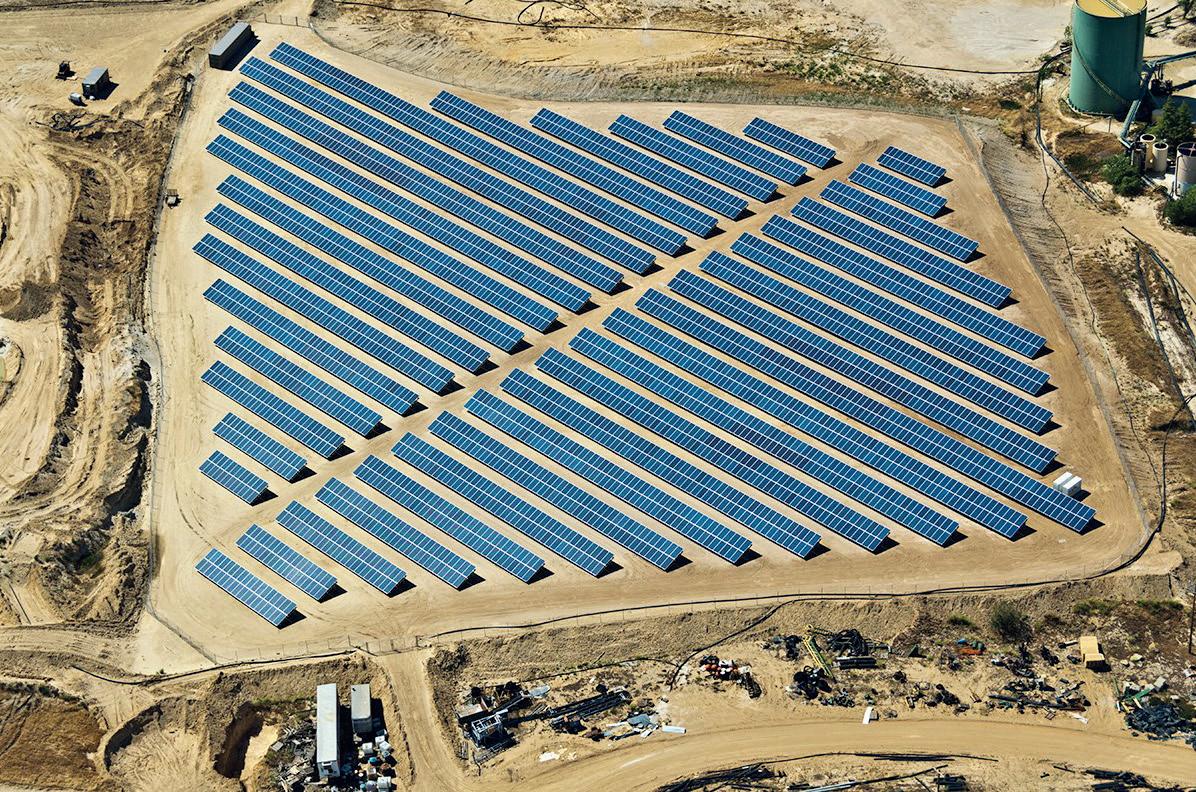
Decades of functional expertise
McKinsey’s Hub claims to have sourced “decades of expertise” to bulk out the hub’s knowledge. Patricia Bingoto spoke on how the company brought together aluminium perspectives.
“We have a dedicated team of people who only focus on building our assets; doing primary research, secondary research, talking to different experts, to
get a very solid view on what volumes should be supplied. We then translate this and provide our perspective on supply, demand, and costs along the value chain at a very granular level.”
Using this knowledge, the platform can then be tailored to individuals to provide clients with a full personalised roadmap. “We also have a full perspective on cradleto-gate emissions, so from mining until your ingot production, with the possibility of going a bit more downstream. And that’s where we do a bit of tailoring depending on who the clients are, because there’s no standard,” said Ms Bingoto.
Predictions for aluminium amidst the current climate
The climate crisis, the energy crisis, the geopolitical tension, and recession.
Patricia Bingoto named recession as the topic of conversation on aluminium demand reduction: “The current situation with the lower demand is obviously linked to the expected or announced economic recession, which I think Europe is feeling


Aluminium International Today January/February 2023 14
*Editorial Assistant, Aluminium International Today ** Senior Knowledge Expert at McKinsey *** Partner at McKinsey
CIRCULAR ECONOMY
Patricia Bingoto
Anna Moore
quite significantly.”

However, aluminium, especially the automotive sector, Ms Bingoto predicts, “is going to be supported by this transition [to electric vehicles and sustainable demand] as, by default, the industry becomes more aluminium intensive.” With consumers changing their demands, aluminium responds. Not only is the green transition fuelling the need for aluminium, but also a general growth pattern for the number of vehicles produced.
So, there is a conflict in the direction of aluminium. With recession we see decline, but with the nature of our material, there is upturn. The response of the industry to such uncertainty has been placed on hold.

“Demand from society. Are we going to walk back from the demand for great products now that we’re in a tougher economic situation?” – Anna Moore.
Ms Moore states: “Our view is this is a budget, not a run rate problem. We [the industry] need to accelerate investment. The regulatory environment continues to support movement towards decarbonisation; in our view, players who move faster and invest now will be those who capture green premia. There’s a short window of opportunity before more grain
capacity comes online, so we remain quite bullish on the outlook for sustainable materials.”

Future of Sustainability: Catalyst Zero
The industry has committed to decarbonising by 2050. Despite current challenges, it has become apparent that the industry will not let go of their sustainability goals.
Ms Bingoto defined ‘sustainable aluminium’:

“I would say there are three definitions. The first one is going to be just recycled aluminium. So that is the one that is achieving the lowest CO2 footprint. Then the second one is going to be what we call low carbon today, so less than four tonnes per tonne to something much greener at smelting level, almost zero and ideally covering the full value chain. The third is slightly different. Sustainability is not just CO2, I would say that even more important is Environment, Social and Governance (ESG). So, your sustainable aluminium at the end of the day is going to be one that is respectful of the ESG.”
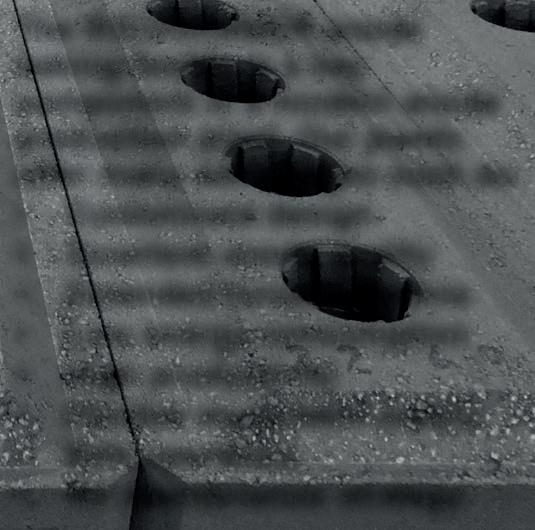


ESG consideration is the basis of the majority of aluminium companies, with this becoming the forefront of the entire value chain, consistency of the quality of
aluminium can be maintained.
Anna Moore went on to define what Catalyst Zero is:
“As a firm we do a lot of sustainability work and transformation work. The intention of Catalyst Zero is to bring these together; we combine our deep knowledge of sustainability with our long track record of successfully serving clients on transformation initiatives to help them know the true end to end sustainability transformations and transparency into where carbon sits across their organisation.
A final message from the McKinsey Firm:
“Of course, the outlook looks very different commodity by commodity. But even while producers may be tempted in this environment to pause on their investment, we really do see that the window of opportunity closes by the end of this decade. And so, this time can be both good for the planet and hugely profitable for players across the aluminium value chain. But that requires being an early mover on investment.”
To conclude, a move in a time of great movement is the way that McKinsey encourages. �
Aluminium International Today January/February 2023 15 CIRCULAR ECONOMY
CARBON BAKING TECHNOLOGY The RIEDHAMMER anode baking facility is a key component in a modern anode production plant. Our plants offer many advantages such as: • Customised design • Excellent anode quality • Extended furnace lifetime • Low energy consumption • High productivity • Flexible equipment supply • Safe operation • RH maintenance strategy www.riedhammer.de DESIGN > MANAGEMENT > TURN-KEY PROJECTS

















































































































































































































































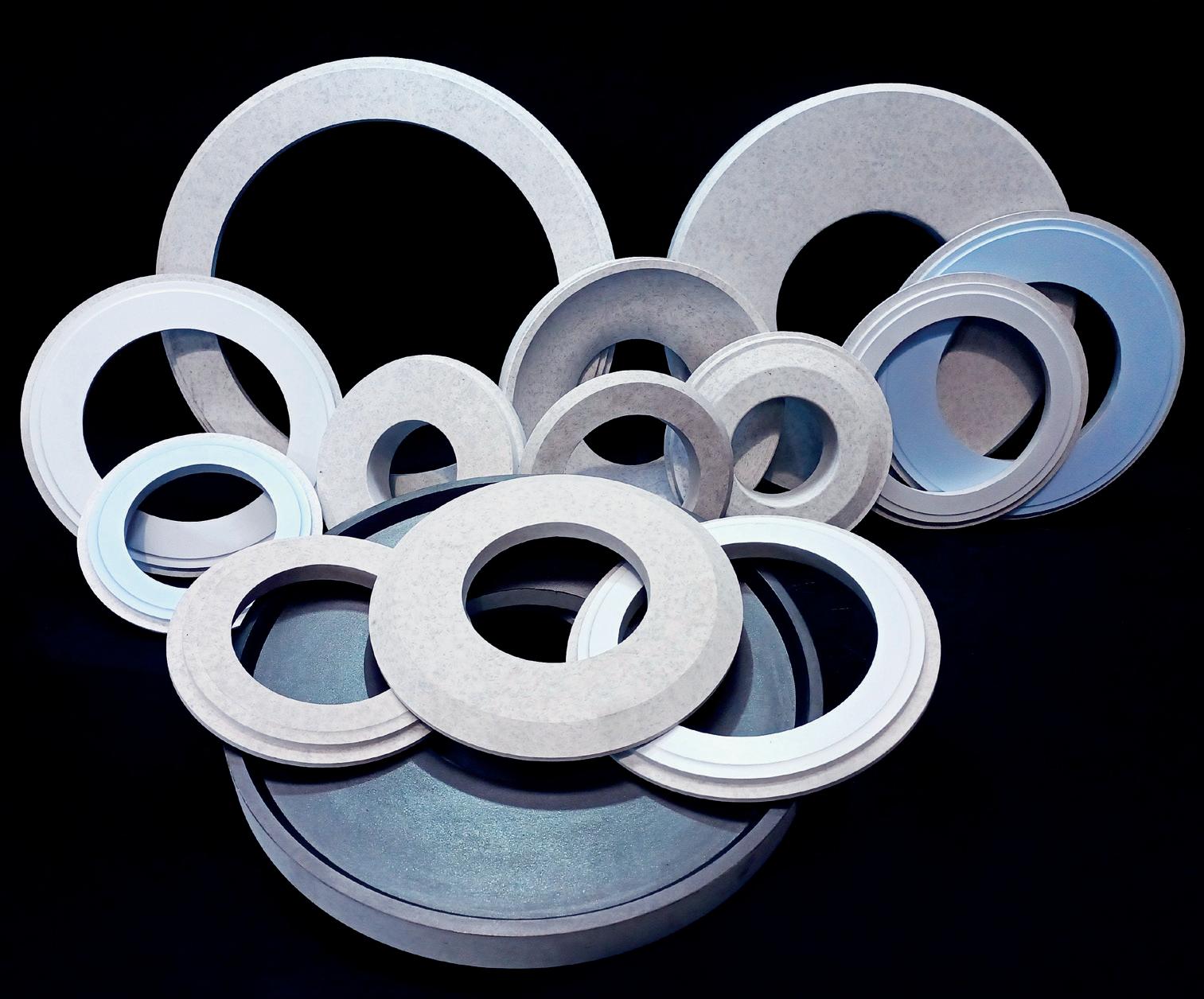


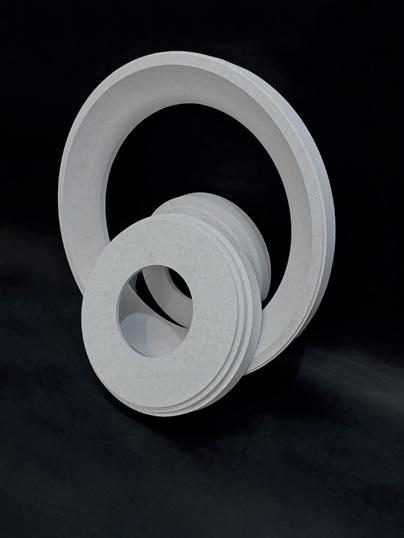

Rodabell T-PLATE: The highest proven lifetime among industry standards https://rodabell.com/ More Info: ventas@rodabell.com
EGA: From small regional smelter to global giant
Emirates Global Aluminium (EGA) announced, at the end of 2022, that it had reached the milestone 40 million tonnes of hot metal since start-up in 1979. In just over 40 years, EGA has grown from a small regional smelter into a global integrated aluminium giant. Addressing EGA’s achievements and goals, Abdulnasser Bin Kalban* spoke with Zahra Awan** on EGA’s past, present and future.
1. EGA recently announced that it had reached the milestone of 40 million tonnes of hot metal produced since its start up in 1979. How has production changed from 1979 to 2022?
EGA began production as Dubai Aluminium in 1979. Jebel Ali was a small regional smelter with a capacity of 135 thousand tonnes per year. It took us almost 30 years to produce 10 million tonnes of metal – now we are doing that in less than four years, our mining subsidiary, the Gulf Aluminium Council (GAC), makes us one of the biggest merchant suppliers of bauxite in the world, and we produce well over 40 per cent of our own alumina requirements.
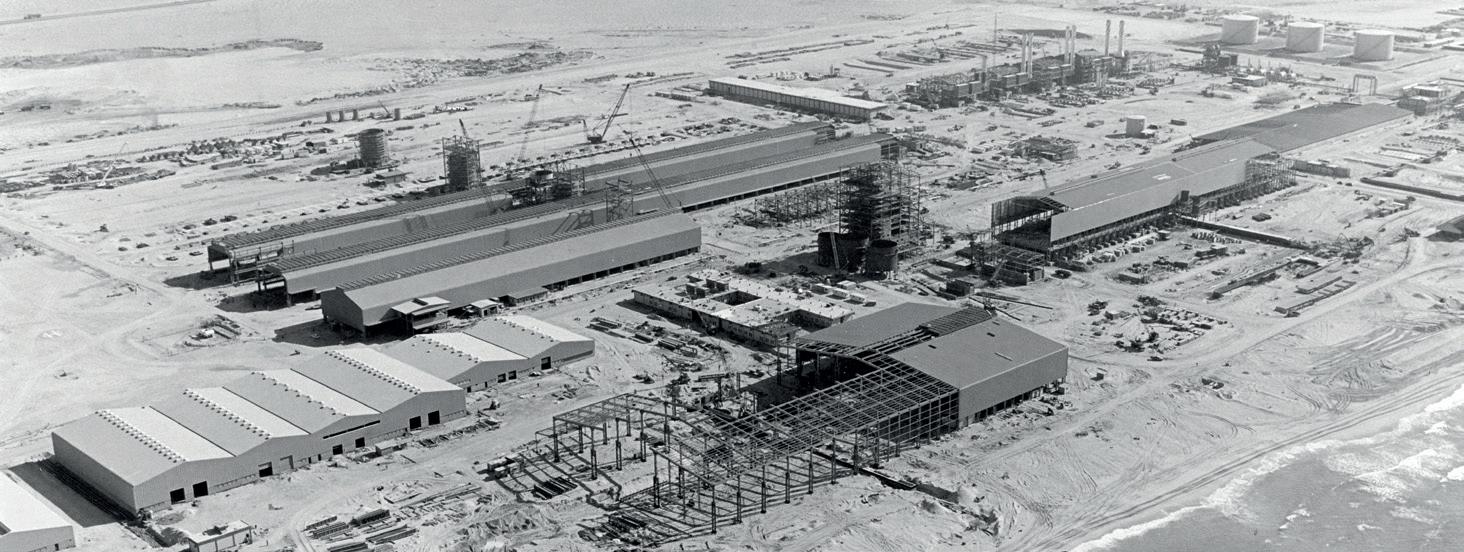

So, EGA’s story is certainly one of ambitious and accelerating growth over more than four decades, and it is my objective that we continue on that path. But I think even more important is how the way we work has changed. I want to give two examples.
The first is safety. When I look at photos of Dubai Aluminium from 1979, what is striking is that people are standing precariously next to unbarricaded heights, and no one is wearing proper
2. Sustainability is now a major topic of conversation; with COP27 being held in Egypt, the attention has turned to the Arab world. What is EGAs sustainable vision for the future? Where is EGA in this vision? Aluminium is an essential material for the development of a more sustainable society. For aluminium to reach its full potential to contribute to human progress, we must make the production of aluminium more sustainable. EGA’s goal is to be a global sustainability leader for the aluminium industry.
PPE – there were even some women employees in office clothes and high heels in the potlines!
Now, safety is our top priority. Over many years, we have invested in inherently safe equipment, our safety management system, and building a culture of safety across our organisation. The result is that our safety performance is significantly better than industry benchmarks. Today, we have a bold aspiration at EGA to eliminate the risk of harm, which is something that has never been achieved before by any company before but which we think we have a duty to future generations at EGA to strive for. The second thing I notice in those
1979 images is the aluminium smelting technology which we were using, which was bought from a technology provider. For more than 30 years now we have developed our own aluminium smelting technology in the UAE. We have used our own technology in every smelter development since the 1990s, and we have retrofitted all our older potlines. We have licensed this technology internationally, and now we are a leader in the global aluminium technology business.
We have a lot to be proud of in our history at EGA, and this gives us a great platform to achieve more in the future.
**
We are strong supporters of the Aluminium Stewardship Initiative (ASI), as the global ESG standard for our industry. We were the first company headquartered in our region to join, and the first to receive a site certification – for our Al Taweelah site. Jebel Ali is also now certified, and we are aiming to achieve the first certification in Guinea. I hope within the next year, and preferably sooner, all our production sites will be certified.
That will be a step towards our aim of producing only ASI-certified metal by
2030.
What is vital about ASI is that it considers all aspects of sustainability, but at EGA we do recognise the central challenge of climate change. Our nation was the first in the region to announce the intention of reaching net zero by 2050, and we are playing a key part in achieving that.
PRIMARY PRODUCTION 17 Aluminium International Today
* Chief Executive Officer, Emirates Global Aluminium
Editorial Assistant, Aluminium International Today
3. What methods of decarbonisation has EGA invested in to assist in the transition to sustainable production? What investments are we to expect?
We have developed a roadmap to net zero, and over the coming decades we must eliminate or offset all our greenhouse gas emissions.
Electricity generation accounts for around 60 per cent of the greenhouse gas emissions from the global aluminium industry, so that is our biggest opportunity and our current focus. We have announced a strategic initiative with TAQA, Dubal Holding and EWEC – all major UAE companies - to divest our natural gas-fired power plants and instead source electricity from the grid, including an increasing proportion of clean energy.
This initiative would unlock significant further development of solar power in Abu Dhabi, and enable EGA to vastly increase our production of CelestiAL solar aluminium. We became the first company in the world to produce aluminium commercially using the power of the sun in 2021, but this still

only accounts for a small proportion of our production today.
We also see great potential in recycling. We are working on a project to build the UAE’s largest recycling facility, with a capacity of 150 thousand tonnes of billet per year. This is just the beginning for us, and we are looking to develop recycling facilities in the UAE and around the world, including with our customers. Looking further ahead, we believe hydrogen may have the potential to replace natural gas as a vector for thermal energy, such as in our Casthouse furnaces and steam boilers, as well as for turbines. We are members of the UAE’s Hydrogen Leadership Coalition, enabling us to explore with others the technical and economic potential of hydrogen within the processes of aluminium production, as well as processes in our local supply chain.
You will also see us deploying our spending power more broadly in our supply chain. EGA was the first UAEheadquartered company to join the First Movers Coalition, a global grouping that aims to send a powerful demand signal to hard-to-abate sectors to decarbonise.
4. What are the greatest challenges that EGA expects to face in the short or mid-term?
I like the quote from John Adams, second President of the United States, who said “Every problem is an opportunity in disguise”. We all know the economic uncertainty that we face currently, and the broader goals we must reach as an industry in the longer term. During COVID-19 we took the opportunity to thoroughly review how we operate and do business at EGA, and we emerged even stronger from the pandemic because of this. I continue to see every challenge as an opportunity.
Contributing to the economy and opportunity in the countries where we
operate is a social aspect of sustainability and a priority for us at EGA.
In the UAE, we have a national strategy called Operation 300bn to more than double the size of the industrial sector over the next decade, and a campaign called Make it in the Emirates to support this. EGA has been making it in the Emirates since 1979.

We have a goal of doubling our absolute contribution to the national economy by 2040, and one way we will do this is by increasing local procurement. We spent some $1.7 billion last year in our UAE supply chain and we sell around 10 per cent of our metal production in the UAE to 26 local companies that make everything from window frames and car parts for local industries and export around the world.

EGA prioritises orders from local suppliers whenever they are competitive commercially and encourages international suppliers to establish facilities within the UAE. In addition, EGA works with Government and other stakeholders to enable the development of supply industries that do not yet exist in the country.
Of course, our goal extends to Guinea, where we believe the long-term future of the industry depends on growing the local supply chain to maximise the economic benefits of bauxite mining for the nation. We spent some $112 million with Guinean suppliers in 2021. One way we have achieved this is by developing a specialist training programme to help potential suppliers meet the quality and integrity standards we require.

Aluminium International Today January/February 2023 PRIMARY PRODUCTION 18
5. What is EGA’s approach to locallymade materials and products?
6. What is EGA’s goal for the future?




At EGA, we are driven by our purpose, which is ‘Together, innovating aluminium to make modern life possible’. These are not just words. We want the EGA employees in decades to come to look back on what we achieved in our generation and see that we fulfilled our purpose. That is why we have bold aspirations for what we will contribute to the world, the societies in which we operate, our people and our business.




These goals are ambitious, and I have talked about several of them already.

I have talked about decarbonisation – which is a fundamental challenge and a great opportunity. Our growth will be in low carbon and recycling over the decades ahead, and that will be transformative.
I have talked about doubling our economic impact, which we will achieve through our own growth, further localising our supply chain, and further localising our workforce. I have talked about safety and eliminating the risk of harm. I want to mention two other bold aspirations we have.
The first, is being the partner of choice for our customers. Serving our customers well has always been a source of competitive advantage and pride at EGA – three-quarters of our customers have bought our metal for at least 10 years. Even deeper partnerships will enable us to serve our customers better, while sharing data and insights will enable us to manufacture our products in a more cost effective way. Together with our customers, we aim to increase the use of aluminium which will be good for our businesses and the world.
And second, I want to mention gender diversity, which is a challenge for our industry in many parts of the world and something very close to my heart. As a business leader, I recognise that diverse organisations are stronger and perform better. As the father of four daughters, I know it is also the right thing to do for our people and society. We have short-term targets to significantly increase the number of women in our workforce, and I am determined that this is just the beginning.

PRIMARY PRODUCTION 19 January/February 2023
Britain’s Global Aluminium Leaders Since 1973

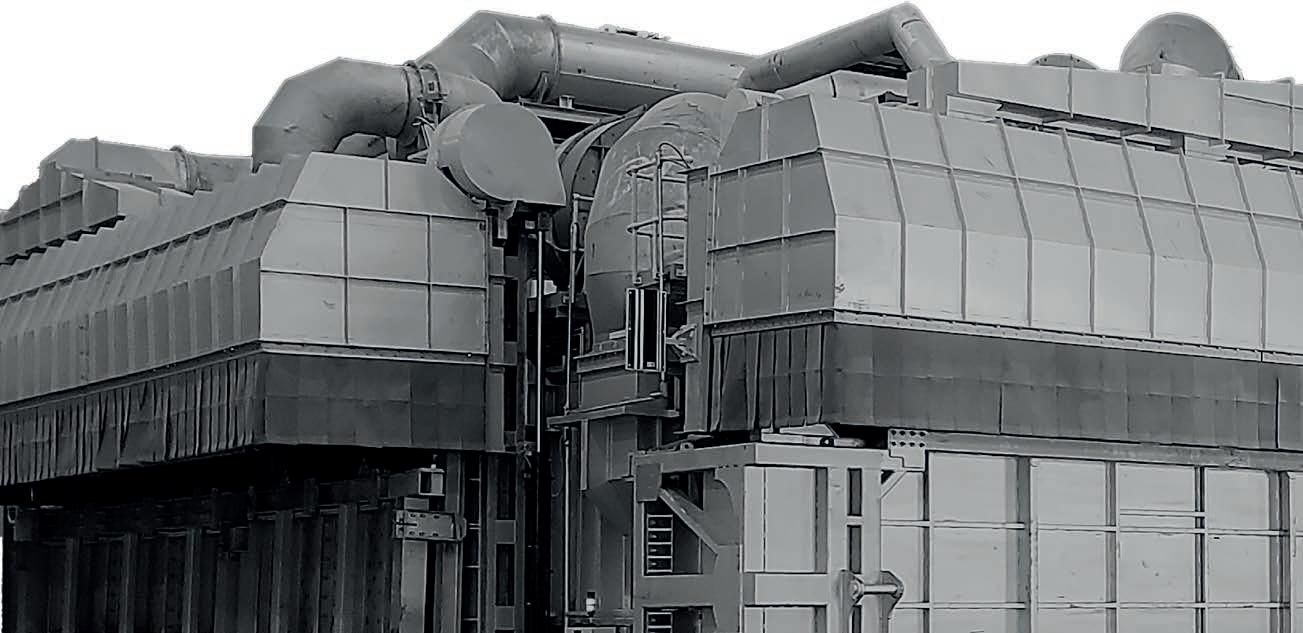
www.mechatherm.com
Aluminium Industry in Brazil
By Richard McDonough*
Brazil is one of the key countries globally when it comes to bauxite mining, production of alumina, and primary aluminium manufacturing. According to a statement from the Ministry of Mines and Energy of Brazil, using data from the Associação Brasileira do Alumínio (ABAL – the Brazilian Aluminium Association), Brazil is the fourth largest producer of bauxite, the third largest producer of alumina, and the fifteenth largest producer of primary aluminium in the world.
The specifics detailed in the statement from the Ministry of Mines and Energy of Brazil: “Brazil is the fifteenth producer of primary aluminium, preceded by China, Russia, India, Canada, United Arab Emirates, Australia, Bahrain, Vietnam, Norway, United States (USA), Saudi Arabia, Malaysia, Iceland and South Africa; fourth producer of bauxite, behind Australia, Guinea and China; and third producer of alumina, behind China and Australia.”
In 2021, Brazil produced 771.7 thousand tonnes of primary aluminium, according to the statement. Alumina production in 2020 was 10.2 million tonnes, whilst bauxite production in 2020 was 32.9 million tonnes.
“More than 80% of aluminium ores in the country are extracted in Serra do Oriximiná in the state of Pará, which has the highest mineral concentration in Brazil, followed by Minas Gerais,” according to a statement from the Government of Brazil issued on 12 August 2022. “In 2021, Brazilian exports of bauxite and aluminium reached (US) $2.9 billion, about 2.5% of our total exports.”

The United States Geological Survey (USGS) reported that Brazil contains the fourth largest reserves of bauxite in the world. This report, issued in January of 2021, indicated that Brazil had 2.7 billion tonnes of bauxite in reserves. Only Australia and Guinea, according to the USGS, have larger reserves of bauxite.
According to a statement from the International Aluminium Institute, “90% of the world’s bauxite reserves are concentrated in tropical and sub-tropical regions.”
“Brazil is also proud to be a world leader in aluminium recycling,” concluded the statement from the Government of Brazil dated 12 August 2022. “Today, thanks to solid environmental legislation, 97% of aluminium consumed in our country is recycled.”
In a report issued by the International Aluminium Institute in May of 2021, nearly 27,000 people were employed in the upstream sectors of the aluminium industry (including secondary aluminium production) in Brazil in 2019. Among all countries surveyed, Brazil was the nation with the third largest employment base in the aluminium industry; only China and India had larger numbers of people working in their aluminium industries. According to the International Aluminium Institute, “The upstream sector of this study accounts for the aluminium industry’s bauxite mining, refining, and smelting processes.”
Norsk Hydro Norsk Hydro (Hydro) is one of the global
companies operating in each of the major sectors of the aluminium industry in Brazil; the company reported that it employs more than 6,100 employees at 11 locations in Brazil.
This company, headquartered in Norway, includes bauxite mining operations at Mineração Paragominas in Paragominas, Pará; Hydro also has a 5% ownership stake in Mineração Rio do Norte (MRN).
Bauxite from Mineração Paragominas and from MRN is utilised to produce alumina at Hydro’s Alunorte refinery. The firm indicated that this refinery is “the world’s largest alumina refinery outside China”; the refinery is located in Barcarena, Pará.
Alumina is used by Hydro to produce primary aluminium at Albras. The firm indicated that “Albras is the largest producer of primary aluminium in Brazil, and has been feeding domestic and external markets with high purity ingots since 1985. Hydro is the company’s main shareholder, with 51% of the shares in this joint venture. The other shareholder is NAAC – Nippon Amazon Aluminum Co. Ltd., formed by a consortium of Japanese companies, trading companies, consumers and manufacturers of aluminium products.”
Alcoa
Headquartered in the USA, Alcoa has major aluminium operations in Brazil. In a news release on 8 September 2022, Alcoa announced that all of its operating locations in Brazil have received certification from the Aluminium
THE ALUMINA CHRONICLES 21 Aluminium International Today January/February 2023
The Brazilian flag is in the foreground. In the background of this photograph is the Christ The Redeemer Statue atop Mount Corcovado in Rio de Janeiro. (The photograph was provided courtesy of Beatriz Marques through Pixabay, 10 June 2013.)
Your
* Do you have questions about the aluminium industry? Governmental regulations? Company operations?
questions may be used in a future news column. Contact Richard McDonough at aluminachronicles@gmail.com. © 2023 Richard McDonough
A. Hydro produces alumina at its Alunorte Alumina Refinery in Barcarena, Pará, Brazil.

(The photograph was produced by João Ramid and provided courtesy of Hydro, 22 July 2013.)
B. Claudiane Miranda, an electrician with Hydro, was seen here at a bauxite mine in Paragominas, Pará, Brazil.
(The photograph was provided courtesy of Hydro, 20 February 2020.)
C. Hydro mines bauxite in Paragominas, Brazil.
(The photograph was produced by Halvor Molland and provided courtesy of Hydro, 12 August 2010.)
Stewardship Initiative (ASI); the most recent one noted was its Poços de Caldas operations.
“Founded in 1965, the Poços de Caldas site was Alcoa’s first venture in Brazil,” detailed this news statement from Alcoa. “It includes a bauxite mine, alumina refinery, and aluminium casthouse, all of which passed the required assessments to earn ASI’s certification to the Performance Standard. In addition, the Poços de Caldas location is the company’s sole producer of aluminium powder that can be used in a variety of industrial applications.”
“This certification marks an important milestone in our efforts to ensure that all of our Brazilian operations adhere to the highest sustainability standards,” said Otavio Carvalheira, Alcoa’s President of Brazil and Vice President of Operations. “It demonstrates our commitment to our stakeholders that we always strive to operate safely, with protection of the environment and respect for people, and to produce products that will create a more sustainable future.”
Alcoa noted that the ASI Certification programme is the most comprehensive in the aluminium industry, applicable to both upstream producers and downstream manufacturers.
“ASI warmly congratulates Alcoa on achieving Performance Standard Certification at its Poços de Caldas operations,” said Fiona Solomon, ASI’s Chief Executive Officer. “Sustainability is an ongoing journey that constantly challenges companies to improve and adapt.”
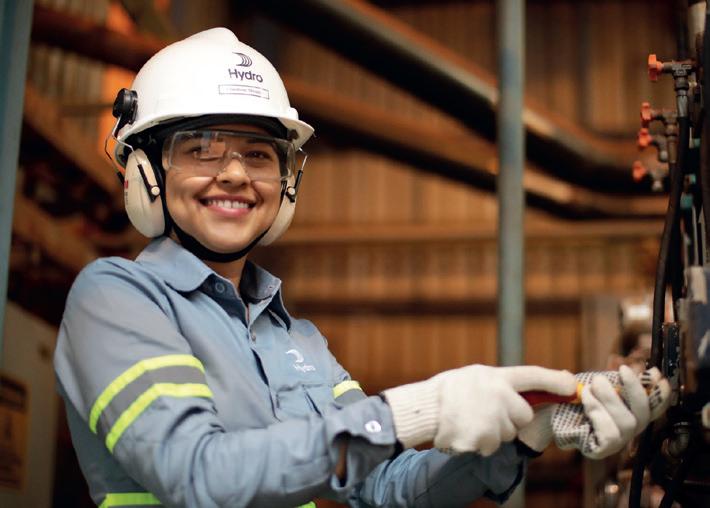
Globalisation is considered by some to have negative consequences for local communities. One example of where activities in one country are being utilised to help enhance life in another country can be seen through actions by Alcoa.
“Now operating on two continents, Alcoa has successfully completed the installation of press filtration technology
for bauxite residue at our Poços de Caldas refinery in Brazil, further leveraging technology that Alcoa first adapted in Australia,” according to a news statement issued on 18 November 2022.

“Construction of the press filtration facility in Brazil began in late 2021. Today, all of the refinery’s bauxite residue is now being processed through the filter system to
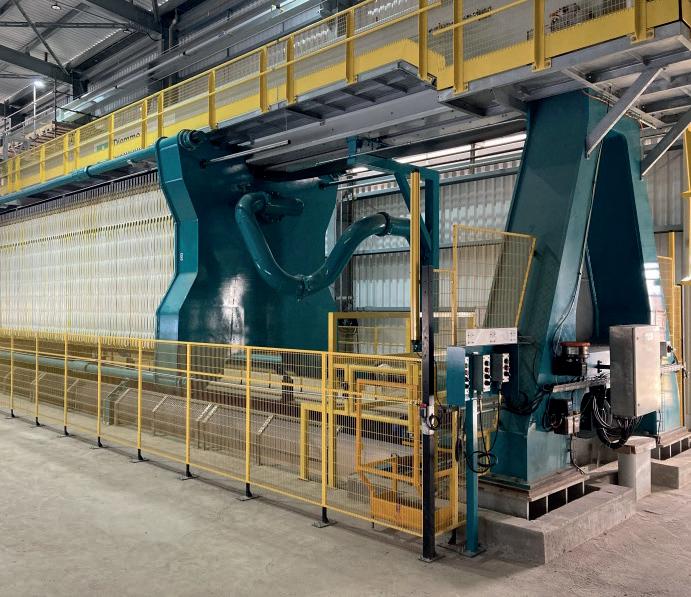

yield dry waste. The team worked more than 800,000 hours throughout the span of the project without a safety incident.”
“We’re so proud of our team and the work to achieve our corporate vision to reinvent the aluminium industry for a more sustainable future,” said Fabio Martins, Manager of the Poços de Caldas refinery. “As we bring this technology online,
1.
Aluminium International Today January/February 2023 THE ALUMINA CHRONICLES 22
An aerial photo of the construction underway as the residue filtration facility was being built at the Alcoa refinery in Poços de Caldas in Minas Gerais, Brazil. (The photograph was provided courtesy of Alcoa, 10 February 2022.)
A B C 2 1
we’re marking a new era of innovation and sustainability for Alcoa in Brazil. In addition to the innovation in the process, the installation of the filtration plant will reduce carbon emissions, due to the lower use of disposal area, lower water accumulation and, consequently, lower energy consumption in the process.”
This news statement noted that “The press filtration plant is the first for Alcoa in Brazil, allowing our facility to use less water to process the residue and less land to store it. Alcoa first adapted the filtration technology to the treatment of bauxite residue at the Kwinana and Pinjarra refineries in Western Australia. Those two refineries have the annual capability to reduce their freshwater use by a collective 2.2 gigalitres (581 million gallons), the equivalent amount of water needed to fill 880 Olympic-sized swimming pools.”
“The filtration plant processes the residue, which is primarily composed of red mud and coarse sand,” the news statement continued. “The residue is pumped into the filter, where plates compact it, removing approximately 70 percent of the moisture. The recovered water is then returned to the refinery’s production process through a closed circuit. The waste that remains is like the moisture content in soil, which is then transported by trucks to a new dry disposal area for further compacting.”
In an earlier news statement issued by Alcoa on 10 February 2022, Brad Klopper, Global Residue Filtration Technology Manager at Alcoa, explained that “This innovative technology allows us to improve our business in a number of different aspects. The geotechnical stability of our ...[residential areas has] improved. We reduce our land use, and we significantly reduce our freshwater usage.”
Alcoa noted that traditionally, bauxite residue is sent to drying areas as a slurry

and then dries in the sun. “Now, with filtration,” Klopper said, “we remove the moisture from the cake and significantly reduce our freshwater usage. In the drying climate of Western Australia, that is a major, positive operational impact.”
On 16 August 2022, Alcoa released a news statement that indicated that testing had begun of the press filtration technology project at Poços de Caldas on 1 August 2022.
“The beginning of the Filter Press operation tests was a very emotional moment for all of us at Alcoa, direct and indirect employees,” highlighted Mr. Martins, in a translation of the news statement issued in Portuguese into English. “The Press Filter is our most important project. In addition to ensuring the continuity of our operations, it meets the Company’s requirements regarding waste disposal and the State Legislation on Dam Safety and allows us to continue advancing in a sustainable way and increasingly reinventing the aluminium industry.”
The news statement, again translated from Portuguese into English, indicated that this filtration project was implemented with an investment of (BRL) 330 million; this amount was approximately (US) $60.6 million.
This global enterprise indicated that it “…has a global goal to reduce global bauxite residue land requirements per metric tonne of alumina produced by 15% by 2030, from a 2015 baseline. Alcoa continues to build partnerships focused on developing innovative pathways for bauxite residue re-use, turning the waste product into a resource. Other examples include using the residue as a material for low-carbon cement as well as transforming it into a soil-like substance.”
On 20 April 2022, Alcoa issued its financial results for the First Quarter 2022.
In that statement, the company noted that “In the first quarter, Alcoa signed an agreement to sell its entire stake in MRN in Brazil to South32 for $10 million with the potential for future contingent payments up to $30 million…Alcoa’s decision to divest its ownership interest is based on sufficient bauxite supplies across its global system, including from the Juruti mine in Brazil.”
South32
This acquisition of Alcoa’s 18.2% ownership stake in MRN, according to a statement from South32, was completed on 29 April 2022, “…further aligning our bauxite supply requirements within our aluminium value chain in Brazil.”
“The acquisition takes our ownership of the mine to 33 per cent and secures the bauxite requirements for our integrated aluminium supply chain in Brazil,” noted a statement on 2 May 2022 from South32.
“The acquisition of an increased interest in MRN is also an important step as we work with our joint venture partners to complete a pre-feasibility study for the MRN life extension project, potentially extending the life of the mine by more than 20 years.”
Headquartered in Australia, South32 describes its business operations as “…a globally diversified mining and metals company. Our purpose is to make a difference by developing partners to realise the potential of their resources. We produce commodities including bauxite, alumina, aluminium, copper, silver, lead, zinc, nickel, metallurgical coal and manganese from our operations in Australia, Southern Africa, and South America.”
In addition to its expanded interests in MRN acquired from Alcoa, South32 also shares ownership with Alcoa in other aluminium operations in Brazil.
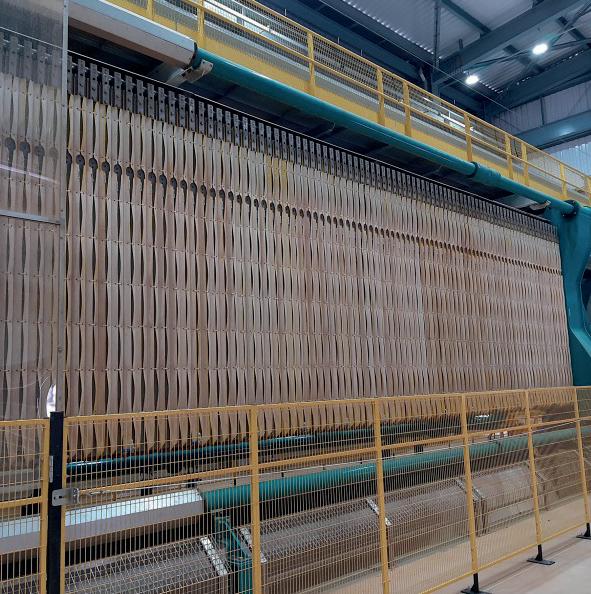
During 2022, the two companies worked to restart their jointly owned Alumar smelter in São Luis, Maranhão. Alcoa owns the majority of the smelting and casting capacity at this facility; South32 holds the remaining interest. The smelter had been “on care and maintenance since 2015.”
“The restart of Alumar will build on our competitive strengths in the global and local marketplace and expand our ability to supply growing demand for sustainably-sourced aluminium,” said John Slaven, Executive Vice President and Chief Operating Officer at Alcoa in a statement issued by Alcoa on 1 July 2022. “We’re proud of the positive impact the restart will bring to our customers, investors, employees, and community stakeholders in Brazil’s Maranhão state.”
THE ALUMINA CHRONICLES 23 Aluminium International Today January/February 2023
These three photographs (2 - 3 - 4) are of the bauxite residue filtration project at Poços de Caldas in Minas Gerais, Brazil. (The photographs were provided courtesy of Alcoa,16 August 2022.)
3 4
Mineração Rio do Norte (MRN)
Beyond Alcoa, Mineração Rio do Norte (MRN) also received certification from ASI in 2022. The firm detailed in a statement dated 3 February 2022 that it was honoured to be recognised by ASI: “The ASI Performance Standard establishes 59 principles to meet the three foundations of sustainability, which are: Environment, Social and Governance. In all these dimensions, key issues such as biodiversity, leadership, management policies, transparency, water resources, commitments to indigenous peoples, human/labour rights and greenhouse gas emissions, among others, are addressed.”
Leadership at MRN explained that securing this ASI certification “…was a great challenge.”
“We attribute this achievement to all the employees who are part of MRN, who committed themselves together with their teams and dedicated themselves to improving processes that are already part of our work routine and reinforce the commitment to the sustainability of our operations,” stated Vladimir Moreira, Director of Sustainability at MRN.
Fiona Solomon of the ASI stated that “We warmly congratulate MRN on achieving ASI Standard Performance Certification at its Porto Trombetas operations. Whilst the significant focus in the aluminium sector is currently on GHG emissions, bauxite mining has also been in the spotlight on important ESG issues, including indigenous peoples’ rights, impact on local communities, pollution control, biodiversity management and proper post-mining rehabilitation, among others. These are all key parts of the ASI Performance Standard.”
Guido Germani, Chief Executive Officer of MRN, stated that “the ASI certification is an important achievement, as it attests to the market and society the company’s commitment to sustainable bauxite production. We are in the middle of the Amazon, inside a national forest,
and the constant search for responsible bauxite production becomes even more significant. This must be in line with MRN’s values, which focus on respect for sustainability, safety, health and, above all, people. Certification in the ASI standard is part of this commitment: to foster legacy-focused development for future generations.”
MRN is a privately-held corporation, made up of five shareholder companies. In addition to the aforementioned 33% ownership interest held by South32 and the 5% ownership stake held by Hydro, other owners of MRN include Vale, 40%; Rio Tinto, 12%; and Companhia Brasileira de Alumínio (CBA), 10%.
According to a statement from MRN, “A large part of the bauxite processed by MRN remains in Brazil, where it is transformed into alumina and metallic aluminium by other industries in Pará and Maranhão. The remainder of production is exported to countries in North America, Europe, and Asia. Ships that leave Porto Trombetas stocked sail hundreds of kilometers along the Amazonian rivers until they reach the Atlantic Ocean.”

Companhia Brasileira de Alumínio (CBA)
One of the major aluminium companies operating in Brazil also has its headquarters in the country. Headquartered in São Paulo, São Paulo, Companhia Brasileira de Alumínio (CBA) announced on 16 November 2022 that it was launching Alennium, described by the firm as “…a label certifying the company’s aluminium as low carbon. The new label will make it easier for consumers to identify lowemissions products that are helping to build a more sustainable world for the next millennium.”
Founded in 1955, CBA describes its business as “…a vertically integrated producer, from cradle to gate, including recycling. With renewable generation capacity for 100% of its
energy requirement, CBA provides sustainable solutions for the packaging, transportation, automotive, building and construction, energy and consumer goods sectors, as well as leading the recycling of industrial aluminium scrap.”
According to CBA, it “…produces aluminium with fully renewable energy, and emits just 2.56 tonnes of CO2 equivalent per tonne of aluminium at the smelting stage, where primary aluminium is produced—in contrast, the global average is 12.8 tonnes of CO2 equivalent per tonne of aluminium, according to the International Aluminium Institute (IAI). Our annual emissions inventories, which we use to calculate the emissions content in Alennium-labeled products, are developed using the GHG Protocol [Greenhouse Gas Protocol] and are third party-verified.”
Leandro Faria, Sustainability General Manager at CBA, stated that “Our Alennium label certifies that the aluminium CBA produces is sustainable, creating value for the entire value chain. The label can be used by CBA’s direct customers and on packaging and other end-consumer applications containing our aluminium.”
“We’ve come to a point where we need to not only take action ourselves but also develop partnerships to implement good sustainability practices along the value chain,” Mr. Faria continued. “We are inviting our customers and partners to adopt the label to help increase awareness and uptake of low-carbon products.”
Beyond the implementation of the Alennium labelling, CBA also indicated that it began issuing a “Digital Passport” that “…allows customers to track sustainability and carbon emissions information about the aluminium CBA produces. The tool will be accessible via a QR Code that CBA customers can add to their products and platforms.”
Mr. Faria added that “This is one of several initiatives to develop technologies for increased transparency, building on our ESG [Environmental, Social, and Governance] agenda. We have launched the digital passport as a trusted source of information about our aluminium, providing buyers with detailed technical, production, emissions and traceability information about the product they are purchasing from us.”
During 2022, CBA continued its investments in the Brazilian aluminium industry. One of the largest investments was at its rolling mill in Itapissuma, Pernambuco. In a news statement dated 26 October 2022, CBA noted that it had invested (BRL) $49.4 million –approximately (US) $9.2 million – from its acquisition in February of 2020 through June of 2022. Much of the funding
Aluminium International Today January/February 2023 THE ALUMINA CHRONICLES 24
Mineração Rio do Norte mines bauxite (highlighted in the red circle) in Porto de Trombetas, Pará, Brazil. (The photograph was provided courtesy of the United States Geological Survey, 2022.)


































+1-800-918-2600 | gcinfo@grancoclark.com | www.grancoclark.com Performance Driven Granco Clark engineers and manufactures aluminum extrusion equipment with performance in mind. Excellence is our standard. MADEINUSA
went, according to the firm, for “… improvements in occupational health and safety, the environment, processes, and digital transformation.”
This mill was purchased by CBA for (US) $50 million from Arconic on 1 February 2020. CBA stated that the facility has a production capacity of 50,000 metric tonnes per year of foil and sheet.
“We want to expand our market share in Brazil and across the continent, and this plant is a key part of this ambition,” stated Fernando Varella, Downstream Products Vice President at CBA. “Our primary goals are to build an industry-leading presence in the aluminium packaging segment in the Americas, and in the automotive and transportation segments in South America.”
On 8 September 2022, CBA announced that it had “…restarted Smelter 3, at its Alumínio facility, in São Paulo state… With Smelter 3 in operation, CBA’s net aluminium production will increase by 25 thousand metric tonnes, from 350 thousand to 375 thousand metric tonnes.”
“In addition to boosting CBA’s production, Smelter 3 now boasts the new technology installed in most of its furnaces, stated Alexandre Viana, CBA’s Primary Operations Officer. He noted that with the completion of this process, the firm has “...an even cleaner production, with lower CO2 emissions, bolstering our strategy of supplying low carbon aluminium to the market.”
The statement continued by noting that “In addition to increasing CBA’s production volume, one of the leading benefits of the project is reducing carbon emissions from Smelters. The Company is planning to upgrade the technology in all of its 1,276 electrolysis cells, updating the cell feeding process to an automatic intermittent feed, which will make it possible to reduce greenhouse gas emissions by 20% in aluminium oxide consumption. The cell upgrades so far have generated emissions reductions of 17,994 tCO2e.”
“The project will also enable a meaningful saving of water and energy in the production process,” the statement from 8 September 2022 continued. “It will avoid 27 million cubic meters of water withdrawals, and reduce energy consumption by 17 MW, enough to supply power to 30,000 homes annually. From 2022 to 2025 the expected investment totals (BRL) $620 million [approximately more than (US) $115 million] for the 1,276 furnaces, including Smelter 1, which is expected to begin operating in 2023 and will add a further 50 thousand metric tonnes per year, taking the total primary aluminium to 430 thousand metric tonnes a year.”
Details about additional expansion
efforts by CBA in the Brazilian aluminium industry were included in its announcement on 30 November 2022. This statement noted that the company had signed the contract for the acquisition of the remaining 20% of the share capital of Alux do Brasil, for (BRL) $98 million – approximately (US) $18.8 million, becoming the sole shareholder of the company, located in Nova Odessa, São Paulo.
According to the firm, CBA completed the purchase of 80% of the company and transfer of control on January 31, 2022, with an option to purchase the remaining 20%.
“Alux has already proved to be essential for expanding CBA’s recycled aluminium capacity,” said Ricardo Carvalho, Chief Executive Officer of CBA, in a statement quoted by ABAL. “We have captured relevant synergies since the beginning of the integration and made consistent advances in the market for secondary aluminium alloys.”
CBA noted, in a news statement dated 1 February 2022, the positive aspects of the acquisition of Alux do Brasil: “As it is one of the largest suppliers of secondary aluminium alloys in Brazil with clients including major players in the automotive segment, Alux’s plant will enable CBA to enter a new market segment and expand its recycled aluminium production capacity by some 20%. The acquisition bolsters CBA’s position in the recycling sector in Brazil and paves the way for further expansion in the future, including into new markets.”
The news statement from 1 February 2022 indicated that “Secondary alloys are primarily used in the automotive industry, a strategic market for CBA in the provision of alloys for wheels, foil, sheet and extruded profiles. These aluminium products are used in structural components and crash management systems, door protection bars and ABS braking systems, as well as other applications. By producing secondary alloys, CBA will also begin supplying part injection manufacturers for combustion engines, pistons and other items.”
“Bringing Alux into our portfolio maintains CBA as a leading domestic player in aluminium recycling,” added Mr. Carvalho.
In a news statement dated 10 August 2022, CBA stated that it entered into “…a partnership with Senai Paraná to develop aluminium foil for use in lithiumion batteries in Brazil. The technological solution of using Brazilian aluminium foil as the current collector is an innovation and is an important step towards developing the local supply chain for this type of battery. This market is growing exponentially.
Electric vehicles, for example, account for nearly the entire global demand for lithium batteries, according to a recent survey by Wood Mackenzie, a research and consultancy firm in the renewable energy sector. Environmental and climate concerns are the main drivers of that growth. CBA is accordingly expanding its investments to guarantee a supply of low-carbon products within its 2030 ESG Strategy.”
An earlier news statement, issued on 12 May 2022, detailed a viability study undertaken by the two firms.
“Aluminium foil is an essential component in the manufacture of lithium-ion batteries,” explained Marcos Berton, head researcher at the Senai Electrochemical Innovation Institute, in the news statement on 12 May 2022. “It is used as the positive electrode current collector in the batteries, and has a big impact on their long-term capacity and stability. With this partnership, we will have a command of the technology through an innovative project. For the batteries to work properly, a great deal of care needs to be taken in their manufacture, using high-quality materials, in this case aluminium.”
Novelis
Novelis is another global company that operates in Brazil. Headquartered in the USA, Novelis describes itself as “…a subsidiary of Hindalco Industries Limited, an industry leader in aluminium, copper and metals; and a flagship company of the Aditya Birla Group based in Mumbai, India.”
In Brazil, the firm includes manufacturing facilities in Utinga in Santo André as well as in Pindamonhangaba; both sites are in São Paulo. The plant in Utinga, according to statements from Novelis, “… produces aluminium foil items used in a variety of markets, including automotive, pharmaceutical, electrical, and household and consumer goods,” whilst the plant in Pindamonhangaba “…is the company’s largest facility in South America and produces aluminium sheet for beverage cans, as well as for the consumer, industrial and packaging.”
In addition to manufacturing aluminium, Novelis is also active in recycling aluminium in Brazil.
“As a leader in beverage can recycling, Novelis has increasingly sought to expand its ability to collect the material,” according to a statement from Novelis. “To this end, we maintain 14 Aluminium Can Collection Centres. Strategically located, the centres allow Novelis to have a broader geographic presence and be closer to small and medium-sized metals suppliers.” �
Aluminium International Today January/February 2023 THE ALUMINA CHRONICLES 26
AUTONOMOUS CHARGING & SKIMMING MACHINES



























































































Designed and Built in the USA • Operating Worldwide 330.758.1147 World Leading Rolling Mill Spray Systems NEW Valve Design MADE IN USA World’s Most Reliable Water-Soluble Valve is NOW 25% Smaller! · 25% Smaller - Fits into Tighter Spaces · Maintenance - More Room to Work · Engineering - More Room to Design Into Tight-fitting Areas · Same Moving Parts as the World Beating 94LPM Valve · Common Replacement Parts The 97lpm Valve Series is still the same maintenance friendly valve design for quick troubleshooting and replacement.
PSI Metals and Seresco partnership
In July 2022, PSI Metals signed a strategic partnership with Seresco, a Spanish software company. Within this partnership, Seresco will support the distribution of the PSImetals products and will launch them into new local markets.
Following months of roundtable discussion, the partnership was announced in September, 2022.
When it comes to adoption of new digital transformation technologies, the metals sector is cautious compared to other industries. However, in recent years, the trend has begun to pick up. The metals industry is witnessing significant changes in digitalisation and process automation with widespread applications covering the entire production chain. This strategic deal could accelerate the digital transformation journey of producers in both global and underserved local markets.
PSI Metals is a German-based, globally operated company and the leading provider of production management software for the metals industry. Their unique solutions cover the whole production flow from Supply Chain Management, Advance Planning & Scheduling, Manufacturing Execution System, Quality Management to Logistics Management in an integrated but service-oriented way.
“PSI Metals has remained the best choice of metals producers when deciding for solutions for automating their steel production process. However, we want to democratise our software solution both locally and globally by providing available options for all metals producers. This means that, once the Seresco team will be ramped up and trained, the customers will be able to choose either to acquire the solutions either from PSI Metals or from our partner company, Seresco,” says Thomas Quinet, Managing Director of PSI Metals.
Seresco and PSI Metals have a shared business culture that shows that the partnership between them will successfully yield results. Seresco has been, amongst ofther, focusing on the metals business for some years and understands the technicalities in metals production generally and in software for metals production specifically. This is indeed critical to deliver added value to customer on the basis of PSImetals software.
According to Rubén Pérez Sobrino, Head of Business Development at Seresco:
“Seresco wants to specialise in the steel sector, taking advantage of the functional knowledge it has acquired over the years. PSImetals is the solution we were looking for- a leader with a global presence that allows us to specialise and aspire to become a preferred supplier in those geographies where we operate.”
The partnership is a journey with many expectations. The two parties have already met to decide the next steps to follow in making the partnership a success. Some of these steps include Seresco setting up a center of excellence with the support of PSI Metals. This would include PSImetals Academy delivering trainings and certification programs to Seresco experts to enable them work on projects independently in the future.
Metal producers face enormous challenges in digitalising and decarbonising their steel production while reducing production costs. They need software to increase their product quality and volume, improve efficiency, reduce energy consumption while minimising CO2 emissions. PSImetals solutions will help steel makers to achieve their digitalisation and decarbonisation targets. They need close support and collaboration to navigate the digital transformation journey.
To support metal producers in their digital transformation and decarbonisation journey, it is important to have experts who have experience in the metals business and understand the complexities that is metals production. Seresco is a multilingual company with the language capacity to support and provide better service within the Spanish and French markets specifically and the global markets generally.
“Seresco has a reputation for their highly professional commitment in the industry.
To this end, PSI Metals will support Seresco to build a center of excellence where they will constantly have PSImetals resources, including trainings from our Academy to serve and satisfy the demands of PSI Metals global customers,” adds Thomas.
The PSImetals Academy supports project implementation by offering various courses that enable customer to understand and use PSImetals products in an optimal way. “PSImetals Academy will onboard Seresco by giving them trainings and certification courses on both associate and professional levels. On the associate level, Seresco will be exposed to the PSImetals solutions as a whole, which will allow them to be key users of the PSImetals software. After that, they will proceed with the professional level where they will collaborate on PSI Metals projects and master how to launch them,” adds Roger Becker, Head of Training Certification at PSI Metals, Berlin.
The partnership emphasises PSI Metals’ commitment to providing customers with state-of-the-art and sustainable production management solutions. They want to strategically adapt and grow in local and global markets while strengthening their resilience to support their customers.

“This partnership fits into our 2030 business strategy, where our partners play an essential role in serving and being close to our customers. At the same time, we support them in their business growth as well as digitalisation and decarbonisation goals,” adds Thomas Quinet, Managing Director of PSI Metals. �

INDUSTRY 4.0 29 Aluminium International Today January/February 2023






A WIDE RANGE OF CCR LINES FOR THE PRODUCTION OF ALUMINIUM ROD Properzi produces lines that can cover the needs of even small cable producers. SMALL OUTPUT RATE FROM EC GRADE AND THE MOST COMMON ALLOYS Production rate: from 1.5 to 3.5 tph. WWW.PROPERZI.COM
The Properzi Reality
Industry 4.0 has rapidly altered the manner in which companies go about procuring capital equipment; not so much from the pure acquisition perspective, but rather from automation, data collection, and digitalization perspectives. Prior to Industry 4.0 customers looking to purchase capital equipment were mainly interested in topics like: maximum performance parameters, production throughput per unit time, equipment efficiency, the cost to operate and maintain the equipment over time, etc. Rest assured customers are still interested in all of these areas and are asking these same questions! However, since the advent of Industry 4.0, customers have added an entire host of questions related to the equipment’s automation system and how it can assist in the attainment of the above-mentioned topics. Properzi developed the IULIUS 4.0 System to ensure our automation system addresses these topics in response to the exigencies of Industry 4.0. However, what better way to understand than by asking questions about our system? Here are the most frequently asked questions from those who want to become our customers:
By Giuseppe E. Marcantoni* and Giovanni Pirovano**
1. What does an Industry 4.0 system consist of?
An Industry 4.0 package essentially consists of various functionalities to support the transition of the end users’ factories into digital factories, through the automation, related sensors, actuators, and associated programming, in conjunction with the appropriate data exchange functionalities of the Information-Technology (IT) domain.
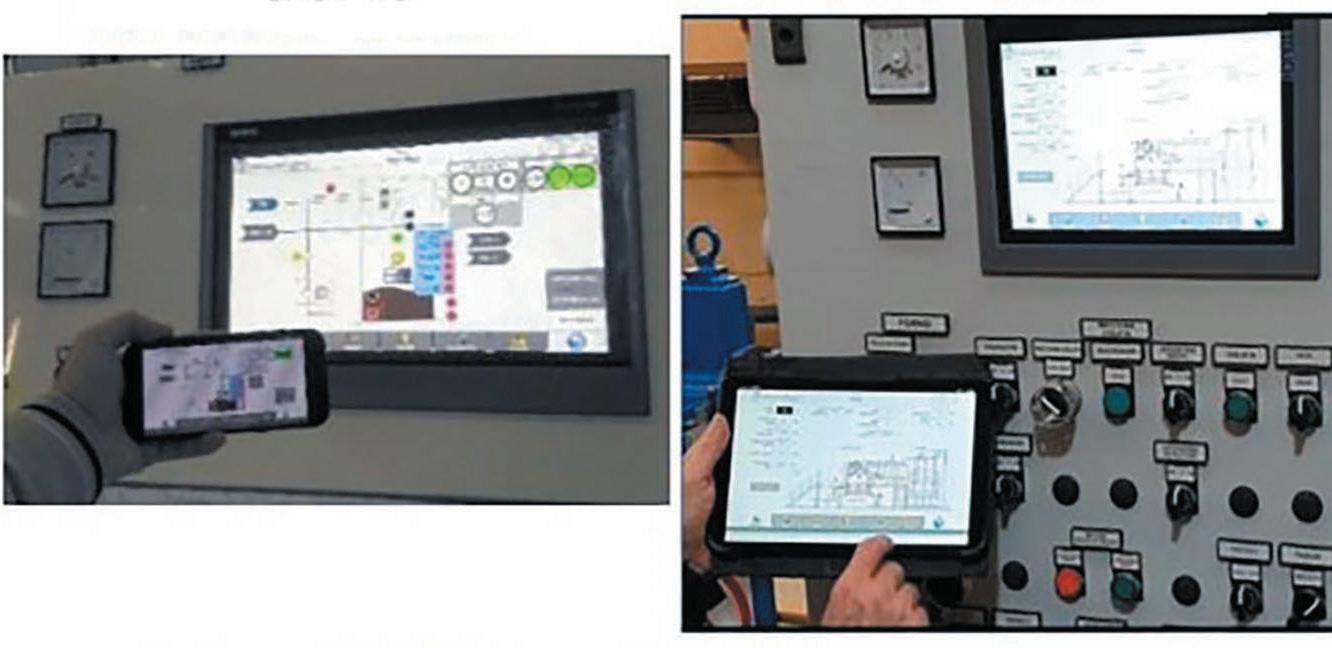
2. Why is IULIUS 4.0 the right choice for me as a Properzi user?
IULIUS 4.0 is an Industry 4.0 package specifically designed for our end-users, to support and facilitate their transition to digital factories. Its main objective is to achieve the best possible performance from their Properzi Line, in the most trouble-free way, in areas including production consistency, quality, OEE, savings, and timely reactivity to new market challenges.
This is done through data collection of the most important variables within your specific manufacturing process. IULIUS 4.0 is provided with Automation and IT

functionalities designed and coordinated to address the specificities inherent of the Properzi technology & equipment, as well as those of our end-users such as rod producers, welding wire producers, ingot casters, etc. Furthermore, the IT functionalities included in the package are pre-implemented and ready to use for the quick and easy integration of the IULIUS 4.0 system with the end-user’s IT system of the factory.
3. How does IULIUS 4.0 help improve my manufacturing process?
INDUSTRY 4.0 31 Aluminium International Today January/February 2023
1. HMI pages on mobile devices On a tablet 2. SCADA page on a mobile phone
*General Manager of Properzi International Inc **Automation Director of Continuus-Properzi S.p.A.
On a mobile phone
Meeting the Demand
With global aluminium demand projected to increase 40 per cent by 2030, the aluminium sector will need to produce an additional 33.3 Mt – a reality only possible through the inception of streamlined technologies, digital manufacturing and sustainable solutions across the supply chain.
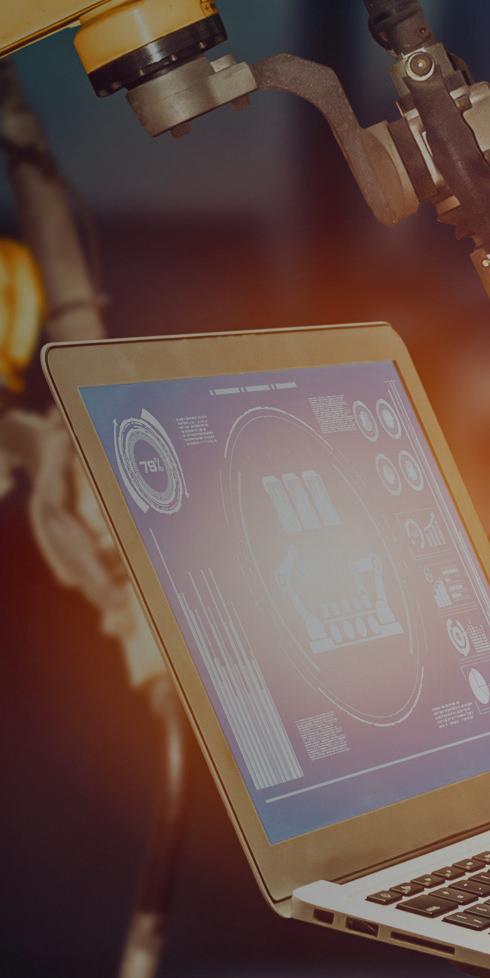
Join us at the Future Aluminium Forum to meet manufacturers rising to the challenge, focus on the opportunities that growth will bring, and prioritize time for your own learning and networking.

In 2023, the Forum will return in a live format to Québec City, a region where the aluminium industry has existed for more than a century and is now seeing rapid change and collaboration between manufacturers, processors, suppliers and OEMs.
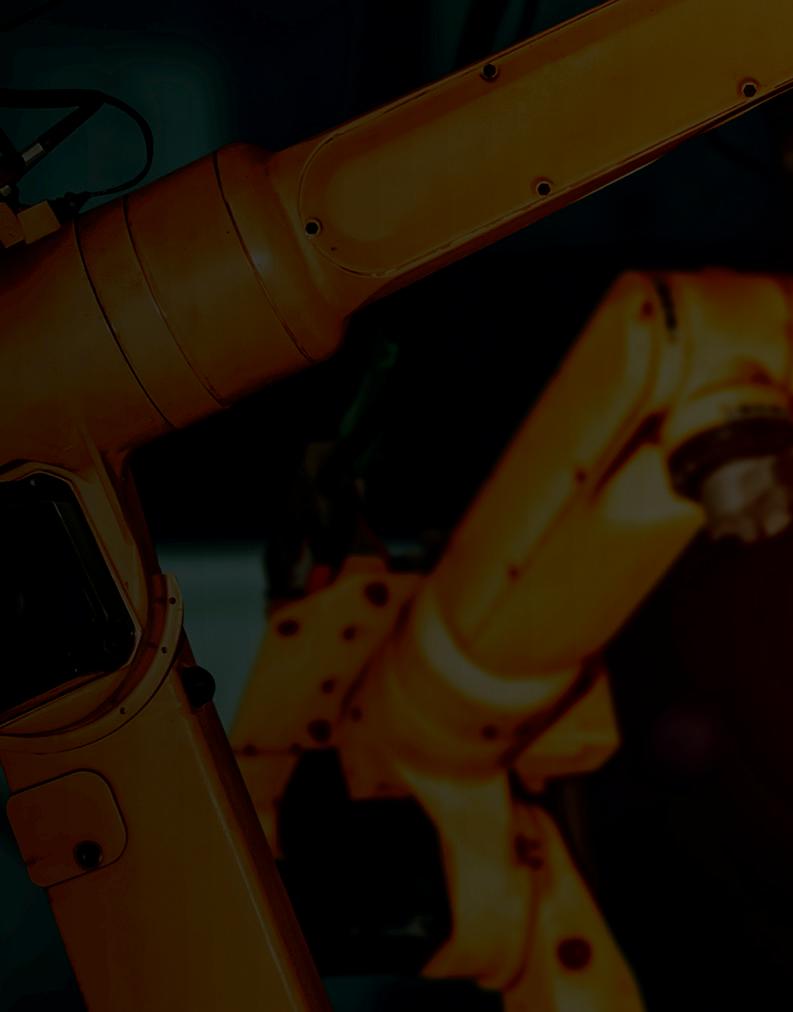

REGISTER YOUR INTEREST AT www.FutureAluminiumForum.com MAY 10-12, 2023 | HOTEL PUR | QUÉBEC | CANADA FOR OPPORTUNITIES TO SPONSOR AND EXHIBIT AT THIS FANTASTIC EVENT Please contact our
Sales Director
Nathan
nathanjupp@quartzltd.com
Commercial
-
Jupp
If so, we are currently looking for passionate individuals to join us as a speaker at our upcoming forum event at Quebec City this May. CONTACT


PROGRAMME
Bloxsome

+44 1737 855115 Join us at the forum this May and...
Enjoy a visit to the Alcoa Deschambault smelter - spaces are limited!

Assemble and network at the cocktail reception (May 10) hosted by our partners Alu Québec.

Listen, to over 14hrs of content on how Industry 4.0 can aid and optimise the aluminium manufacturing process through machine learning, robotics, automation and augmented reality across the value chain.


Dine with all our guests at the Gala Dinner on the first night of the conference (May 11).

Do you currently work in the aluminium industry and have a keen interest in the digitalisation of tech...?
OUR
DIRECTOR Nadine
nadinebloxsome@quartzltd.com
@Alu_Forum O cial
BUSINESS MEDIA LTD Scan for more information
media partners: Supported by: Organised by:
It improves your manufacturing process by providing the Line’s Managers with: � the ability to be more proactive based on data collection and trending, � the ability to perceive and react to unforeseen situations, � the ability to drive the plant/ process tuning in a more structured and methodical way, thereby making it possible to reach greater performance and consistency in a timely manner.
The included functionalities provide support to the Managers responsible for the various areas such as production, quality, maintenance, and energy.
4. What does IULIUS 4.0 do to support the Line Managers in their quest to increase production, quality, performance, etc.?
a. It provides access to HMIs from onsite mobile devices.
i. Why is this important and how does it benefit my operation?
This is important because it provides realtime access to the pages of all supplied HMIs from on-site mobile devices of the end-user through the Wi-Fi wireless access point regardless of position within the plant. The operators can monitor, and if desired even command, the line from anywhere within the plant and at any time (Image 1).
b. IULIUS 4.0 also makes “Supervisory Control and Data Acquisition” (SCADA) pages available on end-user mobile devices, either through the on-site WiFi connection or remotely through the internet (Image 2).

i. Why is this important? This functionality is designed for the Managers of the Line and allows them to be fully updated on the operation of the Line at any time and from any location.
c. To be an even more effective support tool, the above information is also specifically tailored for and provided to the mobile devices of each designated Manager through highly effective pages which contain the Key Performance Indicators (KPIs) of the Line.
i. What are KPIs and how do they benefit my organisation?
The KPIs are the most important process variables and parameters significant to the Line’s status and performance. In order to make quick and effective decisions, each Manager needs to know the KPIs that are specific to his role within the organisation. The resulting KPIs are grouped in specific dashboard pages, individually accessible
by each of the Managers.
ii. Do the managers need to continuously monitor the KPIs and associated dashboards in order to be well informed?
No, the IULIUS 4.0 system itself monitors the process for them and alerts the Manager, via an automatically generated e-mail, when a process variable deviates outside pre-set limits (Image 3).
iii. How does my personnel access this information?
The KPI dashboards are easily accessible from the end-user’s mobile device(s). For example, the Production Manager selects the specific production period for a batch of coils, touches a button to update the dashboard, and the specific KPIs regarding the Production of these coils will appear on his mobile device (Image 4).
5. What does IULIUS 4.0 do to help fine tune the process and increase quality and consistency?
The IULIUS 4.0 System, through data acquisition by the SCADA across our automation, constantly monitors that selected process variables, most critical to quality, remain within their preset optimal ranges for the entire production time of a given product, for example a coil. Should one or more alarms get activated or not, the relevant coil is automatically classified as 1st quality or lower according to tolerance ranges preset by the end-user. Nonetheless, the final classification also takes into account the manual or automatic inputs related to the recipe being used and the mechanical/chemical
laboratory test results. For each produced coil, the relevant data is then stored into a database, and the results are provided to the Managers through KPIs, reports, and e-mails.
i. Why this is important?
The freedom to establish the tolerances for each significant process variable is extremely useful to focus the tuning process on the more critical parameters, those requiring particular improvements in a certain period within the life of the Line.
ii. What happens if during the tuning process I realise that a variable is significant for the process but not currently acquired by the IULIUS 4.0 system?
The IULIUS 4.0 System is designed with open architecture; this means that it is possible, with minimal cost and time, to extend the automation system to monitor additional desired process variables simply by adding the appropriate sensor(s) or actuator(s) and making any required programming additions or modifications.
iii. Does the IULIUS 4.0 system resolve everything?
Unfortunately, the IULIUS 4.0 System is not a magic wand, but it does however provide the end-user with the ability to automatically monitor process variables through the automation system and be alerted accordingly when a process variable goes outside the preset limits.
Since all the process variables provided with sensors are kept under control by the IULIUS 4.0 system, the managers and operators are more available to investigate other process variables or features that might be significant bottle necks limiting further improvements.
6. How does IULIUS 4.0 provide support to increase efficiency and reduce operational costs?
The system is designed to monitor the consumption of utilities such as gas and electric, as well as that of other significant media.
Furthermore, the system calculates the OEE, as well as all the individual efficiencies which culminate in computing this overall indicator. These individual efficiencies take into account the weights of discarded product parts (i.e., discarded bar or rod), the time used to run the Line relative to the total time available, the percentage of Line speed, and the ratio of 1st quality products to the total (see an example in Image 5). IULIUS 4.0 also calculates and reports the relevant data per cast and per shift.
7. How does IULIUS 4.0 make
Aluminium International Today January/February 2023 INDUSTRY 4.0 34
3. E-mail alert on mobile phone
maintenance and technical assistance more effective?
i. How does it work?
It provides Wi-Fi access via Internet to the programmable devices of the Line, to monitor the program in execution for diagnostic purposes, and to adjust the operating parameters. It also allows duly authorised Properzi engineers and/or enduser personnel to troubleshoot, make changes, or add features from a remote location.
ii. What are the benefits of Remote Technical Assistance?
Compared to the direct intervention of a Properzi technician on-site at the enduser’s plant location, remote assistance grants decidedly superior timeliness at lower costs. Furthermore, lead-time for availability of a service engineer is normally much shorter and travel time is eliminated.
8. How does IULIUS 4.0 render the integration of the Line with Factory Level IT services faster and easier?

a. This occurs through a Database accessible by the end-user’s IT system, with very diffused and commonly used standards/protocols.
i. What is this database used for? This additional database is used to export and share data with the IT system of the end-user. It provides the end-user with the possibility to combine the Properzi Line data with data coming from other Lines or Systems present in the same production site, for a general grouping of KPIs, or to implement other new functionalities at the Factory Level.
ii. Where does this data come from? To populate the new database, the SCADA takes data from its internal database and writes it to an SQL Server, for example, to facilitate easy interface by the IT system of the end-user.
b. This is further accomplished through an interface with the end-user’s Manufacturing Execution System (MES)
i. Why is this interface important? This is important because the MES plans, improves, and optimises production within the entire facility, including that pertaining to the Properzi Line.
ii. How is this accomplished? IULIUS 4.0 instantaneously exchanges a set of ready-to-use data with the MES program that runs in the end-user’s IT system.
iii. Why is this beneficial? The data exchange between the IULIUS 4.0 and the MES through this interface are of specific interest for the end-users in order to digitally integrate their Properzi Line with the logistic system, or with the supply chain within their factory, and/ or with other lines present in the same production site.
c. Additionally, the SCADA System is used as the IULIUS 4.0 platform for relevant data management and storage.
i. What does the SCADA System do? It provides monitoring and control functionalities to continuously improve and maintain the process performance of the Line. It generates traceability data (such as metal codes, cast numbers, production lots, product numbers, weights, etc.), production and quality reports, process set point controls, as well as data acquisition trends/logs.
ii. Is there an advantage to a SCADA System compared to Edge Computing Solutions?
The SCADA allows the end-user to own and collect their facility data as opposed to having it reside in a cloud.
iii. Why have a SCADA System as the supporting platform?
Using a SCADA System as the supporting platform provides the end-user’s IT with all the automation-related specificities already embedded and operational in a ready-to-use IT system
9. How is IULIUS 4.0 advantageous for the Properzi equipment end-user? The automation is specifically designed and engineered based on our intimate knowledge of the Properzi equipment, process and technology. Since the appropriate actuators, sensors, and programming are already implemented in the IULIUS 4.0 system it provides the following advantages:
a. Capture/record all essential Properzi process information which provides readymade KPIs, dashboards and data to the various managers within the plant

b. Reduces engineering hours and debugging period normally required by the end-user’s IT Department to integrate the Line’s-specific process operations/ controls in the factory procedures
c. Provides ready-to-use data for the end-user’s IT system
d. The results provide ready-made functionalities that are directly applicable without any effort
10. Can IULIUS 4.0 be implemented on existing Properzi equipment or is it only available on new equipment? IULIUS 4.0 can also be implemented within existing plants through selective upgrading of the equipment and/ or automation in order to provide all the features and functionalities of the System, or it can be implemented in part depending upon the specific goals and objectives of the end-user.
The contents reported in this article represent only a part of what the IULIUS 4.0 system can offer. We remain at your complete disposal for further insights that can guide customers towards Industry 4.0.
�
INDUSTRY 4.0 35 Aluminium International Today January/February 2023
5. Efficiencies and OEE
4. Dashboard page for the production manager

Qatalum contract on tapping vehicles awarded to HMR

HMR Hydeq has been awarded with a contract for the delivery of 5 tapping vehicles to Qatar Aluminium in 2022/23.
These five tapping vehicles shall replace and upgrade some of earlier delivered 15 tapping vehicles, which, together with crucible cleaner and other stationary equipment, form HMR’s Complete Closed Tapping System for transport of all liquid aluminium in the smelter.
This system has been in use in Qatalum since 2009 and it is the ultimate showroom for HMR’s products in the Middle East.
The contract for delivery of total five new vehicles is very important to HMR Hydeq. The company is very proud that Qatalum has chosen HMR’s products again. It confirms that HMR’s Tapping System delivers up to the expectations and that this system is competitive in respect of investment and operational costs, too.
Why Tapping Vehicles
HMR’s vehicle-based metal transfer concept is the most efficient and costeffective way to move molten metal from the pots to the casthouse. With tapping vehicles from HMR Hydeq one person can tap, weigh, transport, flux, de-dross and discharge the molten aluminium in a safe and efficient way. No splashing, no overloading, no metal loss, one machine and one operator only.
Safety first
Excellent safety features result from transporting of the molten metal in a closed system, where there is not chance
for splashing of molten metal during transport or discharging. On board weighing system, linked up to the smelter’s production planning centre, secures against overload, while ergonomic and air-conditioned cab with good visibility and full hydraulic suspension on all wheels provide excellent working conditions and prolong live of the components.
Independent operation
The vehicle does not need auxiliary equipment, like overhead cranes, compressed air, tilting platform, etc. nor other operators on the floor. The vehicle can lift off and fetch even the full crucible without external help. It has own compressor for tapping and discharging of crucibles.

Hot crucible cleaning prolongs lining lifetime
At the HMR ladle cleaning station the crucible can be cleaned while it is still hot – it reduces the total amount of crucibles needed at smelter and extends the lifetime of the ladles. It is not unusual to prolong lifetime up to 18,000 hours on the crucible lining.
The Benefits of Automation
Automation is a keyword for steadily improving safety systems on HMR’s vehicles, for example automatic fire extinguishing and autonomous electrohydraulic brakes.
Tube cleaning machine, which is a part of HMR’s tapping system has also been
*General Manager, HMR Hydeq AS
By Endre Røyrvik*
upgraded for automated operation. Tapping tubes can be drilled automatically while on a tapping vehicle. Soon it will be also possible to drill discharge tubes and bends in the same way.
Industry 4.0 will contribute to an even greater degree of remote control. HMR Hydeq works on the further development of the software, where the speed, temperature, pressure, usage patterns and other maintenance and operational statistics can be analysed and used to perform condition-based service and maintenance, prolong component lifetime, and reduce the risk of accidents.
Metal Fluxing
HMR Hydeq has always been at the forefront of developments in its field. The good dialogue with customers allows HMR to steer innovation towards areas that are in demand. An example is a new method of metal fluxing. This process can be now completed in on-board crucible, using specially designed lid. Naturally, it eliminates need of a RAM station, as well as it reduces the wear and tear of the crucibles.
Electric Anode Transporter
The industry is moving towards autonomy and green energy solutions. In addition to improvements to existing products, HMR works on development of a brandnew product: first all-electric anode transporter, which is expected to be ready in 2023. The next natural goal will be an all-electric tapping vehicle. �
TRANSPORT & HANDLING 37 Aluminium International Today January/February 2023
The new all-electric e-transporter from HMR Hydeq will be ready in 2023. It will come in several models that can be adapted to the customer’s needs.
(Illustration: HMR Hydeq AS)
Increased crucible capacity means less cycles to transport the same amount of aluminium. Former MTV-07 has now 7.5 T capacity, while MTV-10 provides now 10.5 T capacity. (Photo: HMR Hydeq AS)
Metal packaging takes hold
Coatings
innovation plays a critical role in circularity and preparing for the packaging future
By Anurag Raj*
Increased recycled aluminium demand has led to new aluminium-rolling capacity in the U.S. to supply the growing metal packaging industry. For instance, Novelis Inc. recently broke ground and began construction on its $2.5 billion recycling and rolling plant in Bay Minette, Alabama. Steel Dynamics Inc announced plans to build a recycled aluminium flat-rolled mill in Columbus, Mississippi.
The strong global aluminium packaging recycling rates drive the increased recycling capacity. According to Ball Corporation, the global recycling rate for aluminium beverage cans stands at 70%. Increasingly, leading industry bodies are establishing greater recycling goals. In fact, European Aluminium and Metal Packaging Europe launched a joint roadmap towards achieving 100% aluminium beverage can recycling by 2030. Comparatively, plastic packaging’s recycling rate stands at 8.7%, a statistic published by the Environmental Protection Agency and last updated for 2018. Compared to aluminium, plastic

bottles, jars and other similar hard-tocollect, sort and recycle articles have a much lower recycling rate. Overall, aluminium’s homogenous material enables better recycling than plastics’ multi-layered and varied packaging. Global aluminium packaging recycling also aligns with consumer demand. A recent global consumer survey reveals a market opportunity for household and personal care brands to diversify their packaging mix with aluminium to meet today’s consumers’ sustainability preferences and enable a circular economy. In response to greater consumer awareness of the environmental footprint of packaging, continued investor interest and innovations in metal packaging, major consumer packaged goods (CPG) brands are shifting to metal packaging. Coatings play a significant role in this transition.
Enabling circulatory and lightweight packaging
The Aluminum Association estimates that
almost 75% of all aluminium produced in the U.S. is still in use today and that recycled aluminium saves 95% of the energy needed to make new aluminium. In addition, Metal Packaging Europe reports that no other beverage packaging can reach such high recycling rates while using so little primary material, resulting in product circularity and carbon emissions reductions.
Additionally, more brands are shifting their primary packaging to postconsumer recycled (PCR) content. While PCR offers environmental and economic advantages that support a circular economy, coatings innovation remains at the forefront of enabling even greater incorporation of recycled content into aluminium packaging. PCR’s unique surface characteristics and material properties require a comprehensive package of progressive coating solutions for continued product protection.
In addition to PCR, the industry focuses on optimising packaging weight, which
Customer Sustainability Business Partner, Packaging Coatings
Aluminium International Today January/February 2023 PACKAGING 38
*PPG
Innovel
PRO
can lower waste, decrease costs and enhance product function. Aluminium’s lightweight, stackable, and strong characteristics allow brands to package and transport more products using less material. And many consumers prefer lightweight designs over heavier glass and plastic bottles.
The great aluminium expansion and packaging trends Today’s global beverage market expands, adapts and evolves at an accelerated rate. A recent study by Market Research Future estimates that the U.S. beverage can market alone will reach $32.93 billion by 2028. Consumer demand for new drink concepts is one market growth driver. These include ready-to-drink products, water, non-alcoholic beers, mocktails, coffees, energy drinks and nutrient- and herb-infused beverages. These drink products look to innovative packaging solutions that offer a distinctive design and sustainable packaging, such as recycled aluminium, to stand out in a crowded shelf space. Penrhos Spirits announced they would use new, fully
recyclable aluminium bottles with their limited edition ‘Wonky Raspberry’ gin. The company expects its packaging to be made from 100% recycled aluminium, cutting energy requirements, packaging, transport and carbon footprint. Penrhos will launch the new bottle later in 2023.
Increasingly, cosmetics, personal care and household care brands are also realising the benefits of using aluminium packaging. In addition to recyclability and being lightweight, aluminium allows for a more modern design than plastic. The mono-material package allows a wide variety of logos, designs and functions, including eliminating adhesives and additional labels required with plastic packaging. Aluminium also offers a unique opportunity for brands to feature their personality. For instance, more brands turn to specialty finishes, such as matte and satin, as well as tactile and elaborate labels to bring their vision to life. By using diverse can sizes with a visual and textural surface, brands provide appealing visual and touch elements that create a memorable consumer experience.

One of the most interesting trends in cosmetic, personal, and household care packaging centres on refillable aluminium packaging driven by consumer demand for more environmentally responsible products. Unilever debuted a new line, Love Beauty and Planet, featuring shampoos and conditioners in reusable aluminium bottles to meet the needs of an evolving consumer base. Coatings innovation will continue to play a critical role in refillable aluminium packaging to protect substances from spoilage or quality degradation throughout the product’s entire shelf life.
The evolving role of coatings Coatings advancements support industry trends toward a wider array of shapes and customised printing options to ensure products stand out despite increasingly crowded shelf space. They can add aesthetic and functional elements to packaging to help create visual and tactile experiences for the consumer and differentiate the brand.
In addition to the packaging design, coatings solutions enable a greater postconsumer recycled mix in packaging, support lightweight metal packaging, prevent abrasion or damage prevention of products during transit and protect the integrity of the product for consumer safety. Interior coatings advancements preserve the product, minimise coating migration, and comply with applicable global regulations. These innovative coatings must allow easy and reliable application in varying conditions, temperatures, and humidity in different
plants worldwide.
An integrated coatings partner helps ensure improved production for can makers as more brands adopt aluminium packaging. Operational efficiency reduces waste and resource consumption, including power and water, maintains production speeds and minimises downtime and overall costs. For example, on a line running 2,000 to 4,000 cans every 60 seconds, detecting and eliminating even a few minutes of defective production can dramatically reduce waste, enhance production efficiency and increase good can output.
PPG’s Packaging Coatings technical services team works with customers in trailing and optimising new coatings on their lines for an efficient and smooth transition. Major brands and can makers are converting to PPG INNOVEL® PRO non-BPA technology for beverage cans. The complete removal of bisphenol starting substances from food-contact coatings aligns with PPG’s decadeslong non-bisphenol strategy. Today, the technology has coated more than 220 billion cans in 40+ countries.
This upgrade results from years of research and customer feedback to ensure improved application properties and operational benefits for plants around the globe. PPG prescribes its PPG SAFEASSURE™ product development program for screening starting chemicals and those that could affect the packaged food or beverage to ensure new packaging technologies’ longevity and sustainability.
The right partner for the right solutions
More recycled aluminium plants will come online in the U.S. More brands will turn to metal packaging for its design and sustainability benefits. Coatings enhancements remain critical to enable this broader brand adoption to meet the increasing consumer demand and regulatory pressure for safe and sustainable packaging. Partnering with the right coatings solutions providers like PPG paves the way for on-trend, operationally efficient, innovative and sustainable metal packaging of the future.
Anurag Raj is PPG’s Customer Sustainability Business Partner for Packaging Coatings. He is responsible for leading and supporting PPG’s and its customers’ sustainability targets. PPG’s Packaging Coatings business creates effective coating solutions for nearly all metal packaging end-use in the beverage, food, cosmetic, and personal care industries.
To learn more, visit www. packagingcoatings.com and sustainability. ppg.com. �
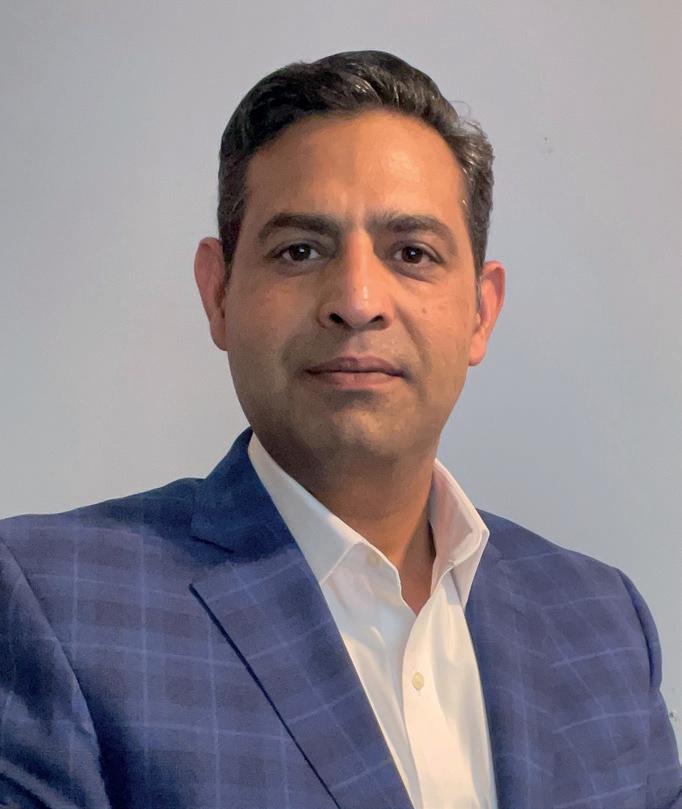
PACKAGING 39 Aluminium International Today January/February 2023
Anurag Raj










The new EVY Compact Vacuum Cleaner FRESH THINKING, SMART CLEANING www.hencon.com The cleanest • �������������Filters even the finest dust: 2 - 0,2 micron • Cleans without dust clouds • Sustainable: better for men & machine The leanest • �Compact, highly manoeuvrable model • �Reduces your Total Cost of Ownership • Single out of stock model The meanest • ��Fully continuity-adjusted • �Collects all dust, ready to re-use & re-market • It’s all about Serving Progress! For more information about EVY: www.hencon.com/evy
Focus on: US Aluminium in 2023 and beyond

US governmental policies – both recently passed legislation and potential future federal, state and local government moves – are generally seen as being supportive of the domestic aluminium industry, particularly those that are aimed at incentivising the electrification of the North American automotive sector.
By Myra Pinkham*
“The US government has identified aluminium as being an important part of its future, especially when it comes to its decarbonization efforts,” Matt Aboud, senior vice president for strategy and business development for Century Aluminum, said, adding given that due to its properties – being lightweight, infinitely recyclable, and being strong but flexible –it is seen as being a material of choice both on an upstream and downstream basis.
There is no question that both the Biden administration and the US Congress have become more active in offering incentives to both support US industrial activity in general and the push for decarbonization.
Duncan Pitchford, Norsk Hydro’s head
of product supply and joint venture offtake noted that the increase in governmental action started through its response to the Covid-19 pandemic, but more recently that has extended to a variety of recently passed legislative action such as the Infrastructure Investment and Jobs Act (IIJA) bipartisan infrastructure bill, the Inflation Reduction Act (IRA) and CHIPS and Science Act.
“It is an exciting time with federal support aligning with greater consumer interest in sustainability,” Stephen Williamson, CRU’s aluminium research manager, said. “And in light of this, the US aluminium industry is responding with a level of investment that we haven’t seen in over 40 years.”
There also has been a lot of attention paid to issues revolving around trade and geopolitical issues, Geordie Wilkes, head of research at Sucden Financial, noted, particularly the amount of aluminium that the US still imports from China and the potential for the US to impose sanctions upon Russia, including Rusal, related to its invasion of Ukraine.
“There is pretty strong bipartisan commitment to strong trade enforcement in the US,” Matt Meenan, a spokesman for the Aluminum Association, said, declaring that he believes that no matter who is in charge of congress or who is in the White House, there will be a support for moves to enforce the trade laws aimed at levelling out the playing field, which,
USA FOCUS 41 Aluminium International Today January/February 2023
*US Correspondent
he said is positive for the US aluminium industry.
He said that while the Aluminum Association believes that the Section 232 tariffs and quotas are an imperfect tool to address the continued challenge of state subsidized aluminium – particularly that originating from China – that any changes should be done carefully to avoid unintended consequences. This is despite the mid-December ruling by the World Trade Organization that the Section 232 tariffs violate WTO rules.
In fact, the Biden administration not only called the interpretation by the WTO “flawed” but in her remarks to the Council on Foreign Relations US Trade Representative Katherine said that it was “on very, very thin ice” second guessing its members’ responses to security threats. Also, Aboud noted that Secretary of Commerce Gina Raimondo has called the Section 232 tariffs a very important part of the US’ overall trade policy.
But while CRU’s Williamson said that he believes that the Section 232 tariffs will remain in effect at least through the first quarter, he pointed out that until the expected new domestic capacity is up and running and their products are qualified, aluminium sheet imports will still be needed. Hydro’s Pitchford agreed that US trade policy has a big impact upon the aluminium supply chain given that the US has been a net importer of aluminium for many years. In fact, Sucden’s Wilkes noted that US aluminium imports were up 35.7% year on year during the first half of 2022 with the potential for continued double digit growth.
There have been concerns that the US would ban Rusal’s aluminium imports in light of Russia’s invasion of Ukraine, Edward Meir, head of research for ED&F Man Capital, pointed out and what impact
that would have upon the US aluminium market even though Russian aluminium only accounts for about 5-10% of US aluminium consumption – much less than in 2018, when a similar move had been considered.
While the US hasn’t instituted such a ban, Pitchford said that he believes that Rusal should at least be sanctioned given that it is operating at an energy cost advantage to producers in both the US and Europe due to the war. Several other domestic aluminium companies agree. In fact, Alcoa has not only been lobbying the US government to do that but had – albeit unsuccessfully – lobbied the London Metal Exchange to do the same. While the US government, which had already taken away Russia’s Most Favored Nation status in April, revoked its market economy status in mid-November, which is expected to result in higher antidumping and countervailing duties on aluminium imported from Russia.
There are, however, some conflicting impacts coming from certain from certain other government moves. Wilkes pointed out that US aluminium consumption is likely to feel downward pressure from the US Federal Reserve’s still aggressive, although somewhat downscaled, move to raise interest rates to counteract the nation’s record high inflation. That has not only raised mortgage rates, therefore further weakening the housing market, but has increased financing rates in general, putting further pressure upon the automotive market, which, while up slightly from its low point remains well below its pre-Covid high of about 17 million vehicles.
But even though US manufacturing activity has slowed down somewhat, as is evidenced by the Institute for Supply Management’s manufacturing
purchasing managers index falling into negative territory in November for the first time since May 2020. “But (at 49%), it isn’t a disaster,” Meir said, helped by US consumer spending, which remains decent.
Also, certain recently passed spending bills are expected to soften that blow. CRU’s Williamson said that is particularly the case with Inflation Reduction Act (IRA) and CHIPS and Science Act – both of which have the potential to boost aluminium demand, including for the aluminium foil used in electric vehicle batteries and the wire and cable that will be needed to rewire the electric grid. He said that partly because of the impact of those bills US demand for aluminium capacitor foil could move up to as high as 60,000 tonnes by 2026.
The IRA is especially seen as being very supportive of aluminium – partly through incentives to accelerate the US transition from internal combustion engine (ICE) vehicles to electrified vehicles, including battery electric vehicles, but also due to provisions that will promote increased solar energy generation and, Pitchford pointed out that solar panels contain “a fair amount” of aluminium extrusions, including for the frame around the panels and the posts that hold the panels up. Wilkes agreed, stating that it takes about 21 tonnes of aluminium to produce 1 megawatt of solar energy.
Williamson said that the conversion from ICE vehicles to BEVs – whether due to the IRA or other governmental pushes such as California’s plan to ban the sale of new internal combustion engine (ICE) vehicles after 2035 – will result in a net positive gain for aluminium intensity in the automotive sector. He explained that despite the elimination of the engine block and drivetrain castings. In fact, he estimates that by 2026 the average BEV will contain about 227 kilograms of aluminium compared with 164 kilograms for an ICE vehicle, which much of that differential coming from the EV batteries and battery box.
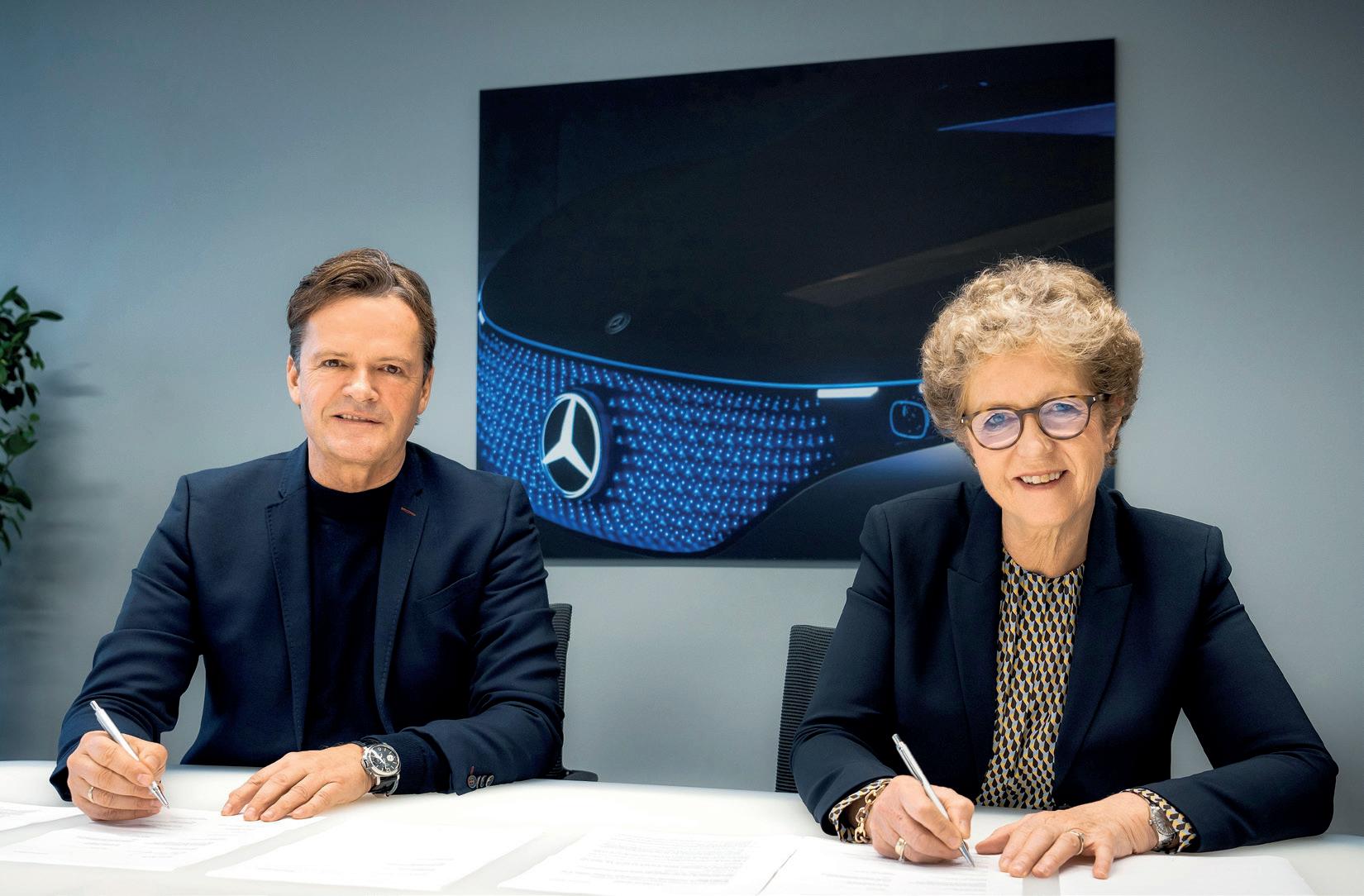
He said that as the US increases production of both semiconductor chips and EV batteries, it will also increase demand for aluminium tooling plate, which had already been on allocation in 2022 – not just because of EV chip production, but also increased demand from the aerospace and defence sectors.
Already, Aboud said, BEVs tend to have about 25% more aluminium than an ICE vehicle, not just for those applications, but also, much like in many ICE vehicles, increased use in such parts as bumpers, hoods, doors, and trunk lids and even in some cases body structures with lightweighting being even more
Aluminium International Today January/February 2023 USA FOCUS 42
Photo 2: Hydro and Mercedes-Benz will from 2023 to 2030 collaborate on a joint technology roadmap aiming to develop aluminium solutions approved for automotive applications with a CO2 footprint below 3.0 kgCO2/kgAl. The ambition is to approach near-zero aluminium by end of the same time period. f.l.t.r. Markus Schaefer, Member of the Board of Management of Mercedes-Benz Group AG, Chief Technology Officer, responsible for Research & Development and Procurement; Hilde Aasheim, President and Chief Executive Officer Norsk Hydro
important to compensate for the weight of the battery and to alleviate consumers’ range anxiety.
Even with more BEV models becoming available – including light trucks – US consumer interest still lags that in other regions of the world, particularly Europe. Wilkes noted that the combination of range anxiety and the belief that government subsidies haven’t been high enough could be contributing to that.
Pitchford said that is why the IRA is seen as being important to promote EVs and the use of aluminium in those vehicles, particularly given its extension of the $7,500 tax credit for the purchase of BEVs. Although he admitted that provision – particularly certain domestic material requirements in the legislation – has created some friction with some of the US’ trading partners.
“While it is for BEVs that aluminium will see increased demand from the IRA, there are also other incentives built into that legislation that will be very supportive of the industry,” Pitchford said, including those to encourage more solar power generation and other means of aluminium intensive industrial decarbonization, including incentives to promote clean hydrogen production.

Aboud observed that the IRA also includes $5.8 billion for transformative/ breakthrough industrial emissions reduction technology demonstration projects, a $10 billion tax credit that could cover up to 30% of the investment cost to manufacturers installing equipment to reduce greenhouse gas emissions and provides an additional $500 million in funding to the Defense Production Act for items critical to national security.
Another important bill is the IIJA. While it hasn’t had a big impact upon aluminium demand yet, it could be huge once the building out of infrastructure projects to be funded by that legislation really takes hold. A good portion of that increase, Aluminum Association’s Meenan
says, is because aluminium – specifically aluminium wire and cable – is one of the most used materials in electric utility transmission facilities and that such wire will see a big bump in demand from such large public works construction projects to be funded by the bill.
But it isn’t just wire that will benefit once more infrastructure construction projects are brought forward. Williamson said that in 2023 and beyond there will
low – only about 50%. “People need to be incentivised to recycle their cans,” he pointed out, but passing federal legislation in the US to set up recycling infrastructure and to provide deposits and/or refunds for UBCs has proven to be very difficult.
It is a different story for industrial markets, Meenan pointed out, with 90%plus recycling rates in the automotive and building and construction sectors. In fact, Wilkes pointed out that in those end markets – particularly automotive – the circular recycling economy is gathering steam.
Meenan said that over the past the Aluminum Association has really ramped up its work advocating for policy changes to support a higher UBC recycling rate. “It is crazy to throw away 40 billion cans per year,” he declared.
That is definitely the case, Williamson said, given that with all the new US aluminium production capacity coming online over the next few years, including new can sheet capacity, there is a need to recycle the other 50% of UBCs that are now going to landfills. But despite that he said it is unlikely that the US will be able to pass a national bottle bill.
Meenan said the Aluminum Association believes that the best way to increase the UBC recycling rate is through recycling refund programs. He noted that currently about 10 states have such deposit and/or refund programs in place.
According to the Container Recycling Institute, while states with recycling programs consume about a quarter of all beverage cans, they account for about 40% of recycled UBCs with a 80% recycling rate vs. 40% in non-deposit states.
Because of that, he said the Aluminum Association is working to increase the number of states with such programs. While no new state or local recycling fund laws have been passed recently, there has been some legislation introduced in a couple of states that could be passed over the next several years.
“That could help, at least on the margins,” Meenan said. “But it will be a long term process because even once a new state law is passed, it can take about three years for the provisions to be put into place.”
also be increased demand for aluminium plate and extrusions.
Governmental policies supporting a push for increased recycling is another leg of the stool, Meenan said, although he admits that there is a need for more work to be done regarding US recycling policy, specifically policy to support greater used beverage can (UBC) recycling.
“One of the advantages of aluminium is its recyclability,” Meir said, but despite that, the US UBC recycling rate is very
While aluminium’s push will come from many fronts – not just the government, but from consumers and the industry itself – Pitchford said the government will continue to have a role in this. But Aboud said that while the industry will continue to receive additional support from the US government and while such legislation will have a transformative effect, it will still take a few years before the impact is felt from the new projects that still need to be built out and implemented. �

USA FOCUS 43 Aluminium International Today January/February 2023
Photo 4: The fastest way to deliver zero-carbon aluminium is by recycling post-consumer scrap. Hydro is currently marketing Hydro CIRCAL extrusion ingot, which consists of 75% post-consumer scrap and has a product footprint of 2.3 kg CO2 /kg aluminium. Image from Hydro’s recycling plant in Clervaux, Luxembourg
Grain refiner specialist advances sustainable manufacturing
Grain refiner specialist MQP – which is set to present new technical research at TMS 2023 in the US this month – has committed to the advancement of sustainable manufacturing by making the production of its super-efficient Optifine 5:1 125 a ‘closed loop’ process.
The award-winning British company is now not only producing its 125% efficiency grain refiner with low carbon aluminium, but is recycling customers’ scrap to make the cost-saving product –which customers can then buy back and improve their own sustainable roadmap.
MQP chairman John Courtenay, who will be presenting the pioneering research behind Optifine 5:1 125’s incredibly high efficiency at TMS, said: “Making vehicles lighter and creating electrical infrastructure and solar panels, aluminium is a game-changer when it comes to energy transition towards low carbon energy sources and we expect demand for this highly-sustainable metal to grow massively by 2050.
“This year, we have started making our Optifine 5:1 125 grain refiner with low carbon aluminium, manufactured using hydroelectric power or wind power results in far lower polluting CO2 emissions, and we aim to convert all our grain refiners, including Optifine 5:1 100 and Optifine 3:100, to this low carbon process in the near future.
“On top of this, we are rolling out a service where we take customers’ production scrap aluminium and melt it down to create our Optifine grain refiners, as well as master alloys, which they ultimately buy back. Making our grain refiners on a closed loop recycling basis is very attractive as customers endeavour to improve their sustainable practices in a meaningful way that goes towards meeting global emissions targets.”
Ultimately, the manufacture of grain refiner does produce noxious fluoride emissions.
To make one tonne of grain refiner, you
need 117kg KBF4 and 251kg K2TiF6. This equates to 368kg of fluoride salts per ton of refiner produced, or around 36,800t consumed per year worldwide. From this 350 kg/t of KAlF4, 35,000t remains as by-product, which has to be disposed of, most of which finds application in fluxes for treating aluminium. From the balance, a substantial amount of F2 is ultimately released into the atmosphere.
However, if the world was to adopt Optifine, fluoride by products and emissions would be reduced by two thirds. The 125% higher relative efficiency
achieving excellent melt quality by preventing unwanted razor streaks, cracks and defects, especially in alloys with high tensile strength and high surface quality typically used in automotive applications.”
The Optifine product range has been developed over 10 years of working with casthouses to improve operational productivity together with five years of fundamental research into nucleation conducted at Brunel University. It is now used in the production of over five million tonnes of alloys a year at 45 major casthouses worldwide.
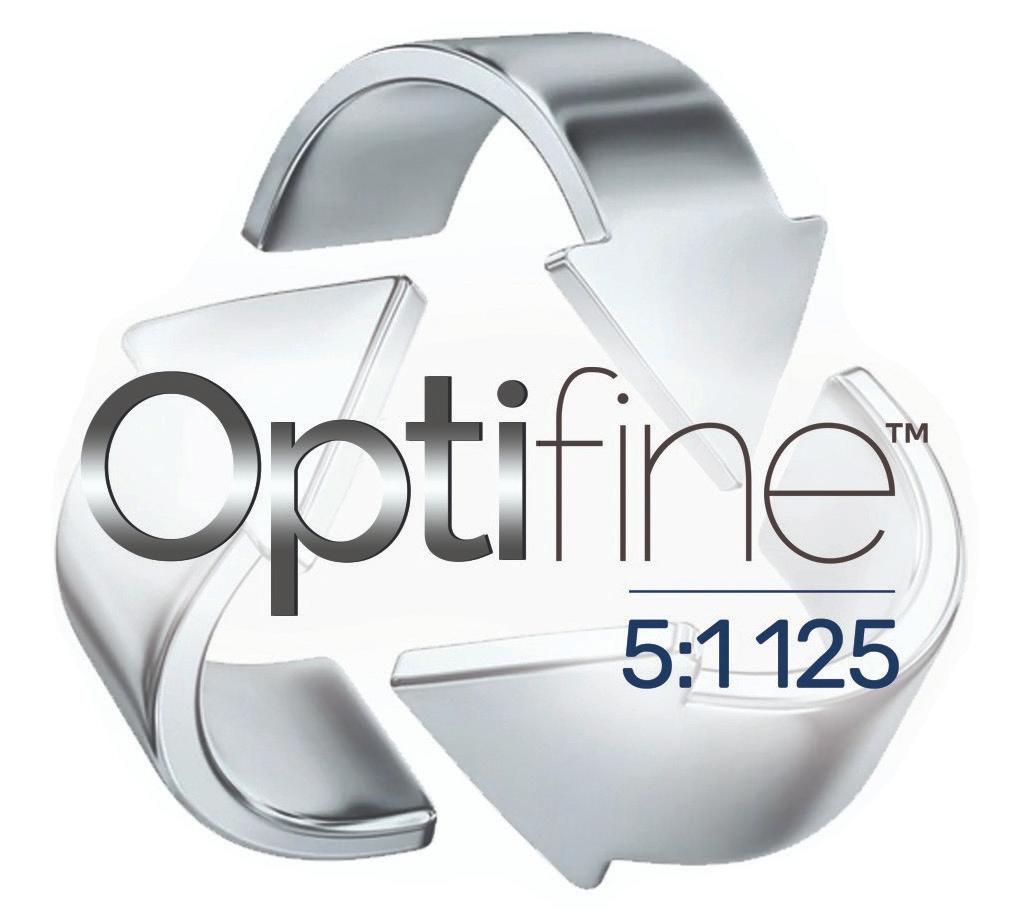
“By improving efficiency, we are going even further in preventing common defects such as pin holes in thin sheets and foils for food and medical packaging applications, black-line defects in litho plates to tears in beverage cans,” said John. “We are also key in ensuring excellent surface quality and extrudability in billets for automotive extrusions such as trims and rails on SUVs and high gloss surfaces for luxury and sports cars.”
MQP operates through a network of consultants and distributors with representatives and offices in all parts of the aluminium world, from Australasia to South Africa, Europe to the Americas.
Find out more about how MQP, which won Most Innovative Company at the international BizX Awards 2022, can help casthouse operations.
of Optifine 5:1 125 means less energy as less refiner needs to be added to the melt, which also means less coil changes and transportation around the casthouse and lower warehouse inventory.
John said: “With Optifine 5:1 125, casthouses need up to 90% less grain refiner, making huge cost savings while
To find out more about the development of Optifine 5:1 125, the mechanism of zirconium poisoning in grain refiner and using state-of-the-art high resolution transmission electron microscopy to unlock the secrets of nucleation at the atomic level, visit MQP’s TMS symposium event page. �
Aluminium International Today January/February 2023 COMPANY PROFILE 44
www.mqpltd.com






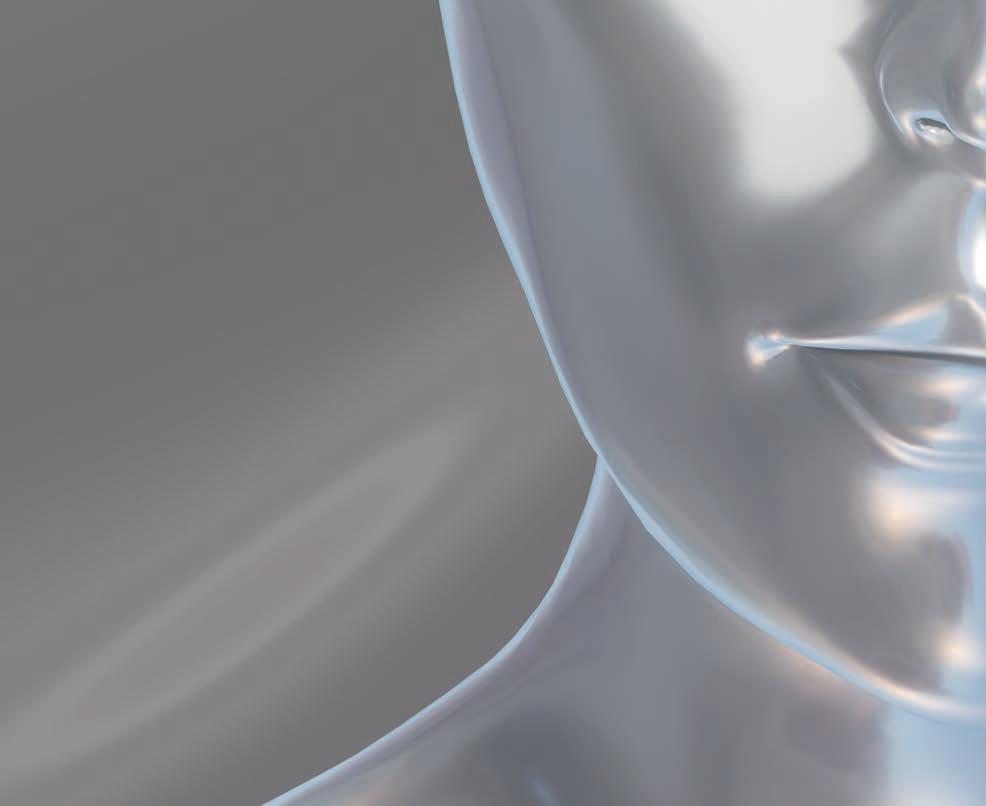









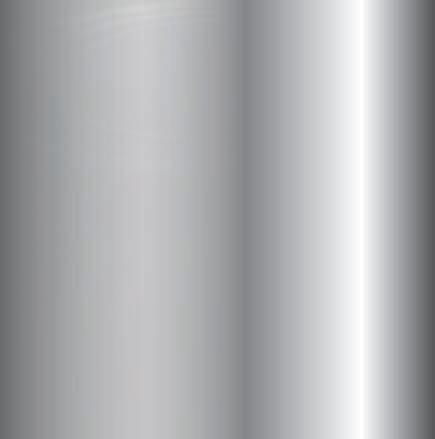













+44 (0121) 684 0175 info@mqpltd.com mqpltd.com The next dimension in grain refinement... Contact us today to discuss your refinement needs. made with low carbon aluminium 125% relative efficiency 5:1 125 5:1 125
What’s next for our industry?

Are things about to change after a period of what has felt like a feast or famine?
Are things finally starting to settle down?


It feels like a dangerous question to ask, considering the events that have unfolded over the last two-and-a-half years.
Both in life and business, we’ve all had to be reactive. In the metals industry, the price of buying materials, like stainless steel and aluminium, and importing them has swayed like a pendulum, one way then the next, depending on what global matter is unfolding.



As a result, it has created an unsustainable marketplace.
And it’s only now that we’re starting to see the actual cost of buying material falling back to a more sensible level. Undoubtedly, it needs to happen. But over the last few months, it has created a feeling of feast or famine across the sector.
Margins have been cannibalised in a market where businesses are only as strong as their weakest competitor. There hasn’t been a better time for customers








to shop around and negotiate with merchants to get the best price and deal.


But as we approach the last few months of 2022, Gary Peters, Director at The Metals Warehouse, a UK-based customcut metals specialist, believes normality is just around the corner… whatever that might look like.























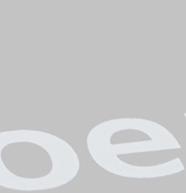





















The series of events that have caused panic buying and depreciating product values


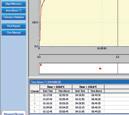

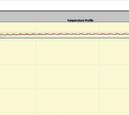





We’re finally starting to see the cost of buying material falling back to a level that is more sensible and sustainable in the marketplace. For merchants in the market, of course, prices falling is a bad thing. However, for the long-term benefits, it needs to happen.
Without stating the obvious, prices became so inflated for several reasons as a result of businesses closing down due to the pandemic, the increased prices of freight, and significant backlogs for getting products into the country through our docks.

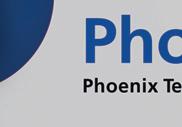
Just as we were starting to recover this year, the horrendous invasion of Ukraine happened. And just like across multiple industries, the metals sector also took a big hit globally.
It’s no secret that Russia is a big exporter of aluminium and nickel - the latter a key ingredient in stainless steel. That, and some questionable trading, led to the price of nickel rocketing beyond all sense of sensibility and recognition earlier this year - priced at over $100,000 and resulted in the market freezing before it dropped again. The same thing happened with aluminium to a certain extent.















Those prices spiked and it caused businesses to panic buy. Those prices have fallen back, but what that has meant is that they’ve fallen back to a level that means it is now cheaper for businesses, like ours, to go and buy the materials than the stock we’re holding.



















When we say cheaper, it’s unlikely that prices will drop to the level they were, pre-pandemic.

Nickel is a good example of this. After the aforementioned crash, it has now come back down to around $22,000 (as of 17 October). That sounds incredibly low when you’re comparing it to where it once was but since the Great Recession in 2008, the price of nickel has barely risen above $18,000 - bearing in mind that it traded at $10,000 for many years before that.
The nickel market is still considerably high. It’s very easy to forget that with time. The same thing can be said about the price of diesel. If that were to drop to £1.20 per litre all of a sudden, it’d feel cheap in comparison to what we have been used to recently.






Throughout history, though, that’s not cheap at all. �

Aluminium International Today January/February 2023 STOCKHOLDING 46
Temperature Profiling and Surveying Solutions in the Aluminium Industry Process Monitoring solutions for • Homogenizing • Solution Heat Treatment T5/T6 • Ageing • Brazing (CAB & Vacuum) • Powder Coating …...and many more Comprehensive Passes through furnace with the product. • Complete product temperature profile • Measurement at up to 20 points • Live 2 way radio communication option Safe No Trailing thermocouples so quick, safe, system installation without production delays. Easy Fully compliant AMS2750 or CQI-9 TUS reports with only a single Click! PhoenixTM GmbH Germany info@phoenixtm.de PhoenixTM Ltd UK sales@phoenixtm.com ... where experience counts ! PhoenixTM LLC USA info@phoenixtm.com www.phoenixtm.com Scan the QR Code to read the full article





Furnaces International brings readers a selection of technical features focusing on all aspects of the international furnaces market, as well as industry news, investments, and the latest products and projects Published quarterly in a digital format, Furnaces International and the new monthly newsletter, are sent to the inbox of over 25,000 industry professionals. As publishers of Aluminium International Today, Steel Times International and Glass International, we are able to compile this knowledge and bring you the latest developments on: • Energy Efficiency • Hot Repairs • Maintenance • Heat Treatment • Thermal Processes • Testing and Measurement CONTACT US NOW: Esme Horn Sales Manager +44 (0) 1737 855136 esmehorn@quartzltd.com Nadine Bloxsome Editor, Furnaces International +44 (0) 1737 855115 nadinebloxsome@quartzltd.com Zahra Awan Editorial Assistant +44 (0) 1737 855038 zahraawan@quartzltd.com WWW.FURNACES-INTERNATIONAL.COM SIGN UP TODAY TO RECEIVE YOUR FREE COPY Look out for the December issue which contains The Furnaces International Buyers’ Guide. It is the essential guide to furnace manufacturers and suppliers of furnace equipment and services to the industrial heating/ process industry.
AFSA 2022
The Aluminium Federation of South Africa (AFSA) hosted the International Aluminium Conference and Exhibition on the 26th and 27th of October 2022 at the Cape Town International Convention Centre in South Africa. The event focused on the promotion of the use of aluminium, with a focus on aluminium applications and uses, market analyses and technological advancements within the industry.
The conference was reserved for delegates, with the exhibition hall open to the public. Exhibition stands were sold out, with a total of 17 exhibitors:
� WISPECO Aluminium
� Hulamin
� Metal and Tool Trade (MTT)
� United Scientific
� National Foundry Technology Network (NFTN)
� CSIR
� Guala Closures South Africa
� EnergyWise
� Coxbro & Sheffield
� Aluminium Beneficiation Initiative
� DQS South Africa
� Engineering Africa
� Air Liquide
� Mundo Ladders
� Blue Crane Holdings
� SE Controls
� Scientific And Precision Solutions
Approximately 100 people were in attendance including domestic and international attendees from various countries in Europe and East Asia. During the conference, speakers and delegates shared their opinions, views, and suggestions on topical issues.
Guala Closures South Africa CEO and AFSA Chairman, Mr Giuseppe Carosini commenced conference proceedings with welcoming remarks. Keynote speaker, Mr Ross Strachan, Aluminium Analyst at CRU, spoke about a variety of factors influencing the global aluminium market.
During both days, attendees had the opportunity to attend various sessions with varying discussion topics presented by the 25 speakers. The umbrella topics covered included aluminium fabrication, additive manufacturing, academic and scientific research and developments, decarbonisation, sustainability and recycling within the global aluminium industry, and topics covering the South
African Aluminium Industry Roadmap (SAAIR). During each session the audience was invited to participate in various polls in addition to Q&A sessions.

As expressed by one of the delegates, “Learning curve and [it is] good to see that there are a number of research work[s] on aluminium locally and internationally. [The] way forward is for the industry to engage academia and science councils.”
Therefore, this event is essential for information sharing and boosting engagement as the industry converges to push for the attainment of the SAAIR deliverables.
As the Aluminium Federation of South Africa, we would like to take this opportunity to extend our sincere appreciation to the AFSA Members, and IACE2022 partners Hulamin, South32, CSIR and Velocity Venture, for their support. We would also

like to thank our association and media partners, exhibitors, speakers - including our Keynote Speaker Mr Ross Strachan, and master of ceremonies Mrs Bridget Zuma- Rubambura, and all attendees for participating in the Premium Aluminium Event of 2022.

An attendee remarked, “It was the most organised conference and exhibition I have been to. The content was very impressive, and the networking opportunities were great. I will definitely be [in] attendance when it returns.”
For those who were unable to attend the event in 2022 check out the #IACE2022 highlights on the YouTube channel https:// youtu.be/_Tn4AlhTYWM see what the exhibitors had to say https://youtu.be/ t2vsKAcdG88 and view the online gallery https://aluminiumsouthafrica.com/gallery/ for a closer look at the event activities. �
Aluminium International Today January/February 2023 EVENT REVIEW 48
Muzi Manzi and AFSA Chairman Giuseppe Carosini
MC - Bridget Zuma-Rubambura
Exhibitition stand United Scientific




THEWORLD'S MOSTEFFICIENT GRAINREFINERNOW PRODUCEDWITH LOWCARBONALUMINIUM REDUCEDADDITIONINCREASEDEFFICIENCY www.amg-al.com enquiries@amg-al.com ALUMINUM I Still setting the standard in Aluminium Grain Refining Performance
TiBAI ADVANCEGREEN
Emmaljunga chose aluminium with future generations in mind
Sustainability was key to producing a product worthy of carrying our children around the world. That’s why Emmaljunga chose Hydro’s low-carbon aluminium, Hydro REDUXA, to uphold its standards for quality, safety and design in their new line of strollers. Our low-carbon aluminium utilizes renewable energy to lower emissions so our customers can create products with our children in mind, fully recyclable with lower carbon footprints.
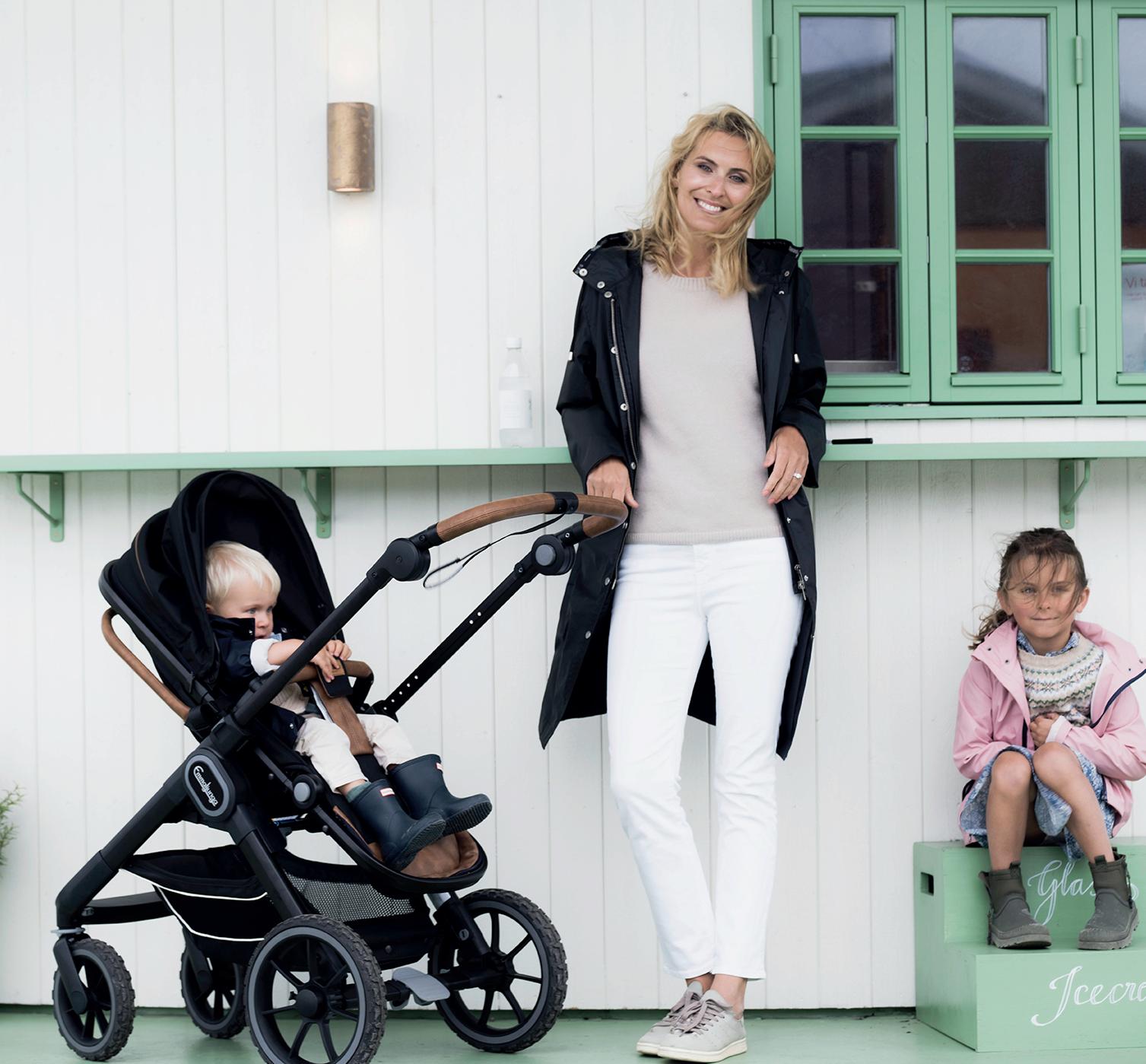
Hydro REDUXA has an average carbon footprint of 4.0 per kilo of aluminium, compared to the 16.7 world average. All our greener aluminium products come with an environmental footprint certificate traceable down to the individual batch so customers can create products that care for future generations.
Visit hydro.com/path-to-zero to learn more about future-proofing your products.
Emmaljunga
Photo:
















































































































































































































































































































































































































